Colombia, like many Latin American countries, is very much a Catholic nation. Even though the 1992 constitution dropped Catholicism as the official state religion, upwards of two thirds of Colombians profess to be Catholic. Throw in the odd Protestant and Christianity rings in at 90%. But, like many countries these days, regular attendance is much less and declining.
Nonetheless, the Salt Cathedral of Zipaquirá Wikipediahttps://en.wikipedia.orgSalt Cathedral of Zipaquirá was voted as the #1 wonder of Colombia by readers of a Bogotá newspaper. It’s a functioning Catholic Church, holding regular masses but, lacking a bishop, it isn’t an actual cathedral.
The cathedral has been created in the caverns of a real salt mine, one that was first used by the Muisca peoples as early as the 5th century BC. The Spanish, of course, took over production since salt here. Back then salt was a medium of exchange due to its value as a food preservative.
The mine continues operations as Colombia’s second largest mine (the largest is in the north near the Caribbean). Workers in the 1930s, devout Catholics, carved niches in the salt walls to house images of the Madonna. By the 1950s a more formal cathedral was carved, which lasted into the 1980s. The current cathedral and the tunnel that leads to it was constructed in the 1990s as the result of an artistic competition. The tunnel has 14 stations of the cross carved into its salt walls. The cathedral is constructed with three sections representing the birth, life and death of Jesus.
But getting there was half the fun. After a brief bus ride (20 minutes is brief in this traffic beset town) we boarded a tourist train that took us to Zipaquirá, a trip of about two hours or a little less. We passed through the outskirts of Bogotá, into the countryside and through several towns and villages.
Trains are something of a rarity in Colombia. The government rail system went broke in the 1990s. There are only a few lines operating in the coal and oil regions. The Chinese are said to be financing a line and the Colombian government has plans to revitalize rail transport. Getting trucks off the highways is a much needed improvement. This line was started by former rail executives and workers. Based on the occupancy of this 13-coach Saturday excursion they seem to be doing well.
As we traveled, our guide called out the neighborhood ratings. “That was a 1-2 neighborhood but now we’re in a 4.” If I squinted real hard I could make out the difference. We saw families enjoying Saturday, farms and greenhouses raising roses and carnations for us to give our sweeties on Valentine’s Day – a big Colombian export. We saw a community on the side of the hill called the Butterfly Neighborhood. Originally a squatters’ settlement, the residence painted their houses bright colors, eventually settling on a pattern that looks like a butterfly from a distance. It’s now the largest mural in Colombia. And we saw multimillion dollar houses high atop the ridge line with private roads and security guards, less than a mile from the Butterfly Neighborhood.
Near the end of the trip a trio of musicians entered our private coach and played a half dozen tunes on guitar, lute and drum. They were quite talented and added greatly to the trip.
After a more normal two-hour bus ride to the airport we’re on the plane flying to Medellin for the next three nights. Tomorrow involves coffee and horses. Even though Judy and I don’t drink coffee and she’s allergic to horses, Catalina assures us we’re going to love the day.
Last time I rode on the back off a beast of burden it was a camel at the Giza pyramids. The blamed animal tried so hard to dismount me that I had to put my cell phone away and hang on for dear life.
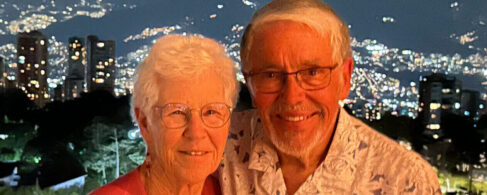
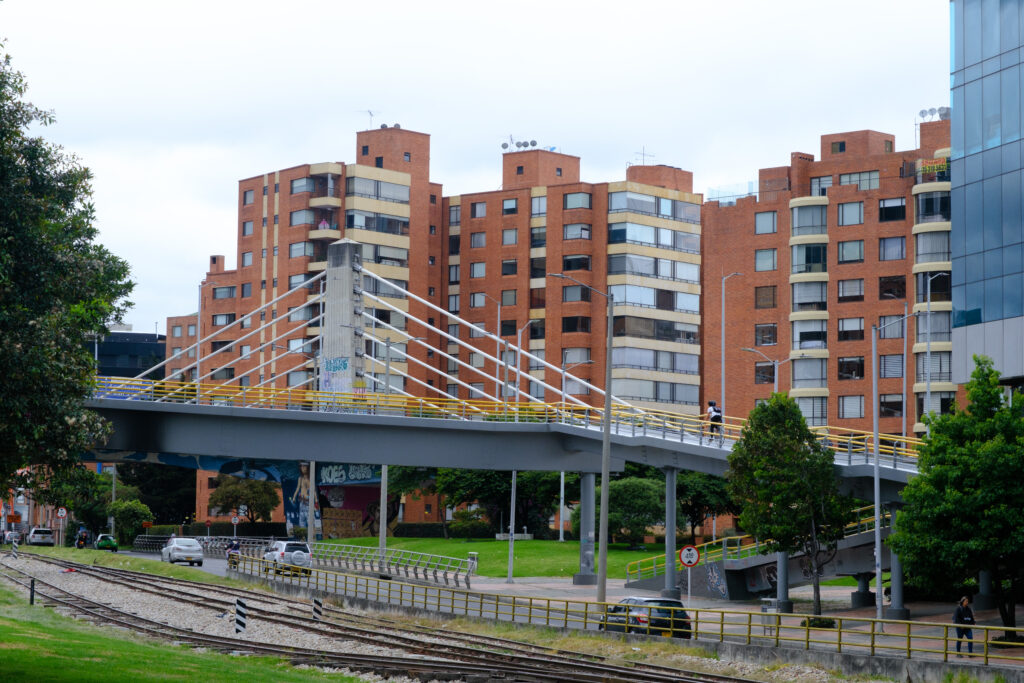
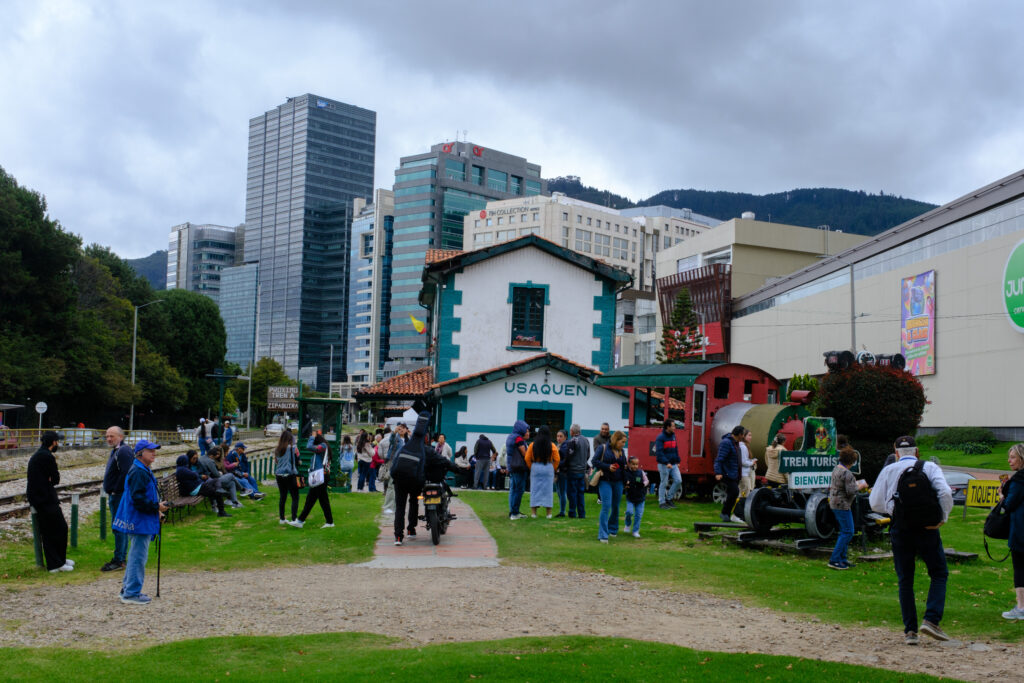
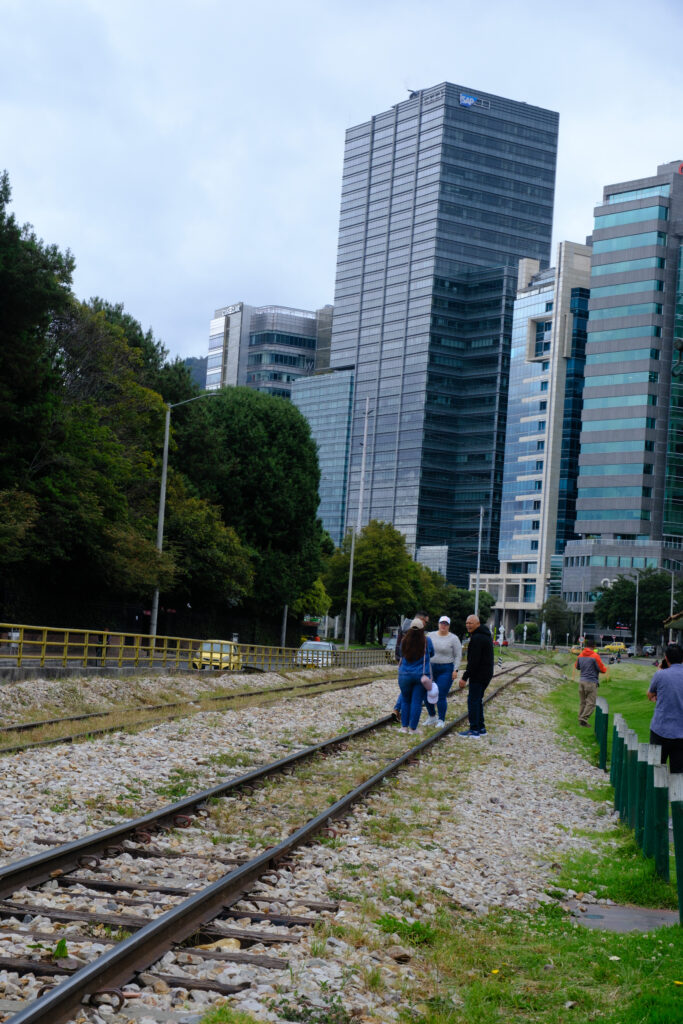
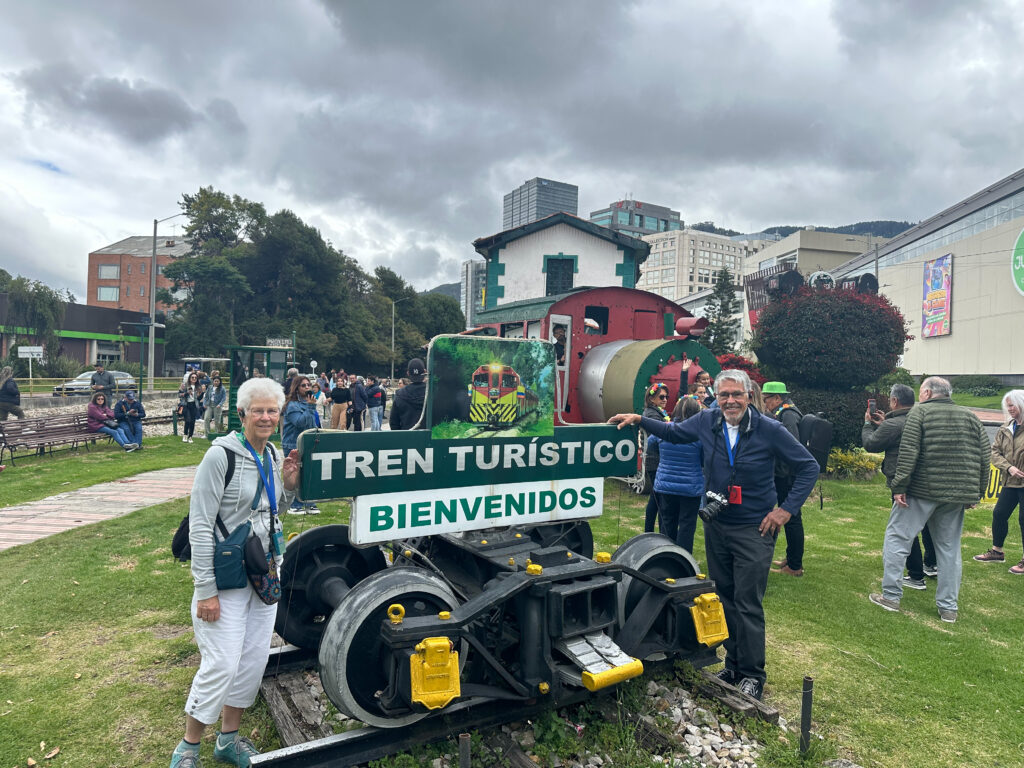
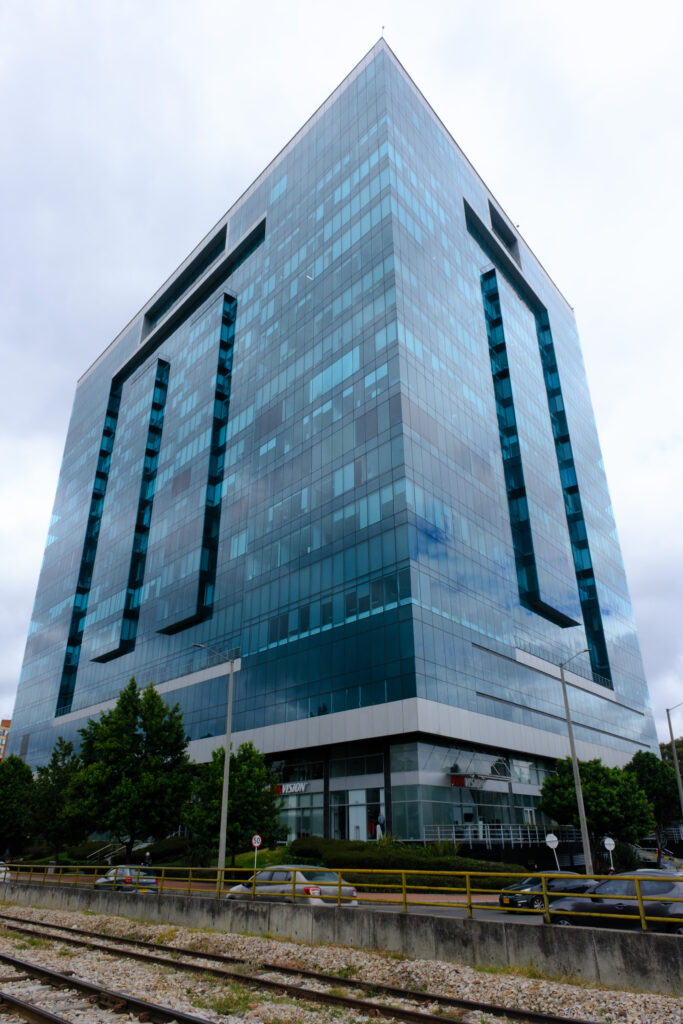
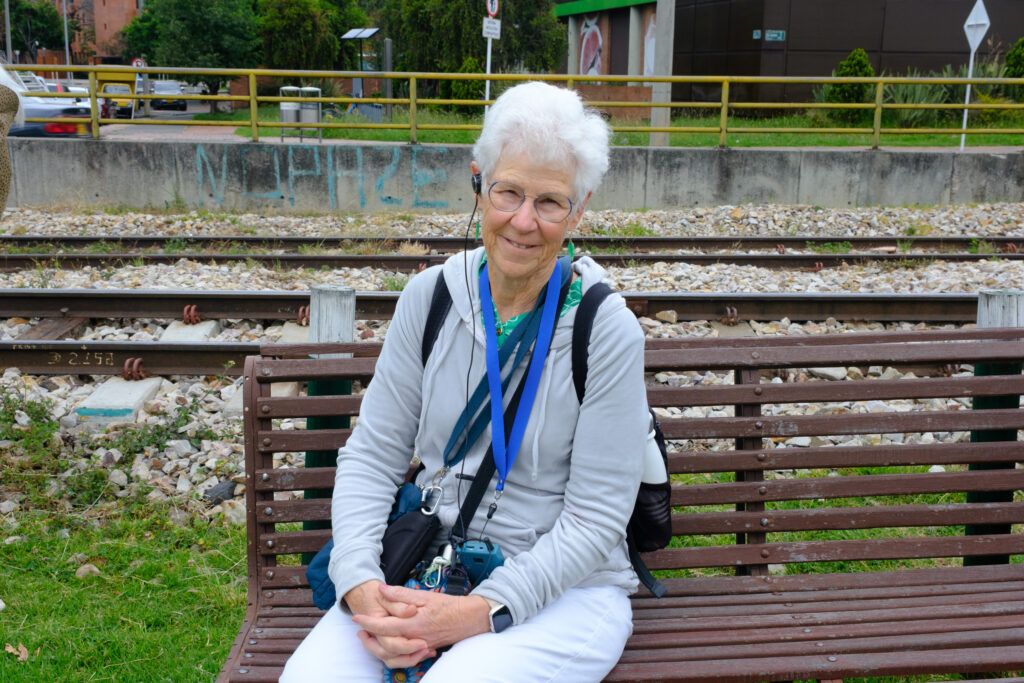
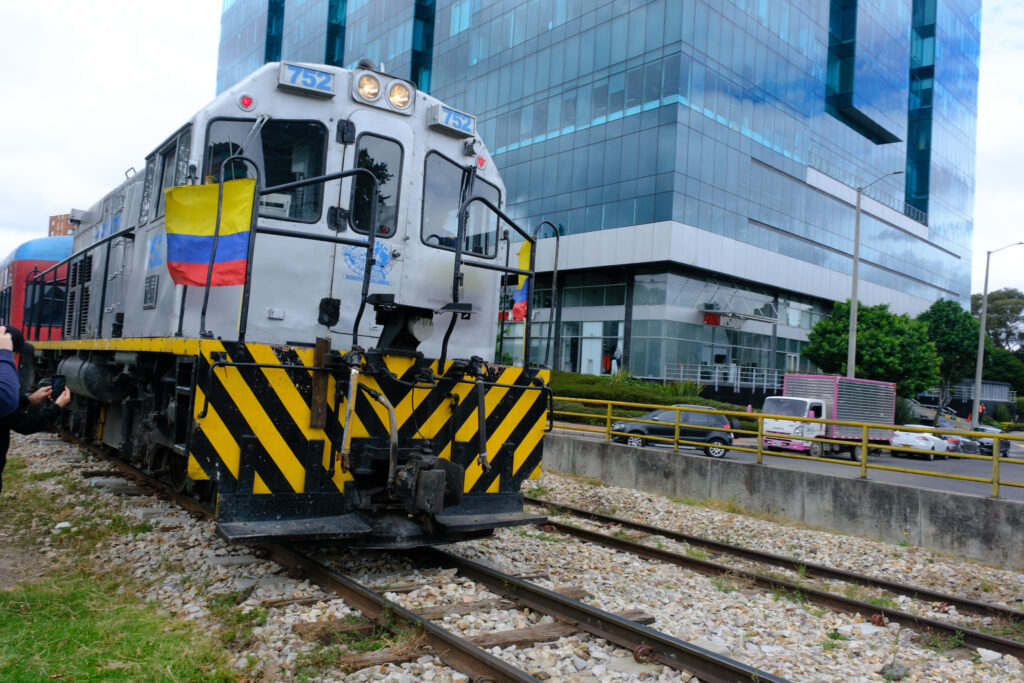
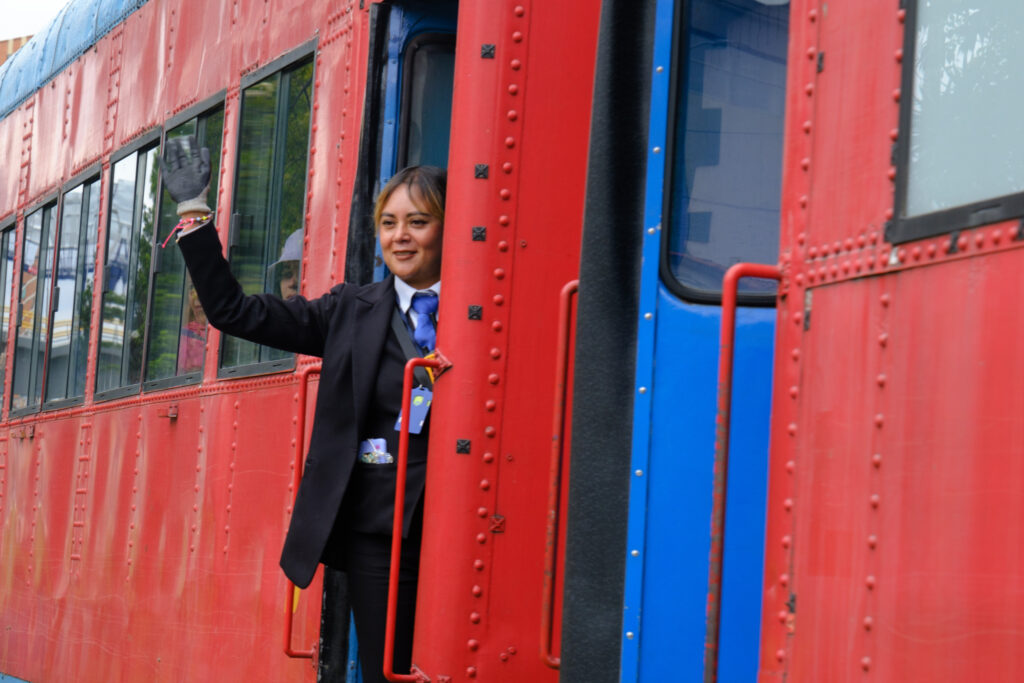
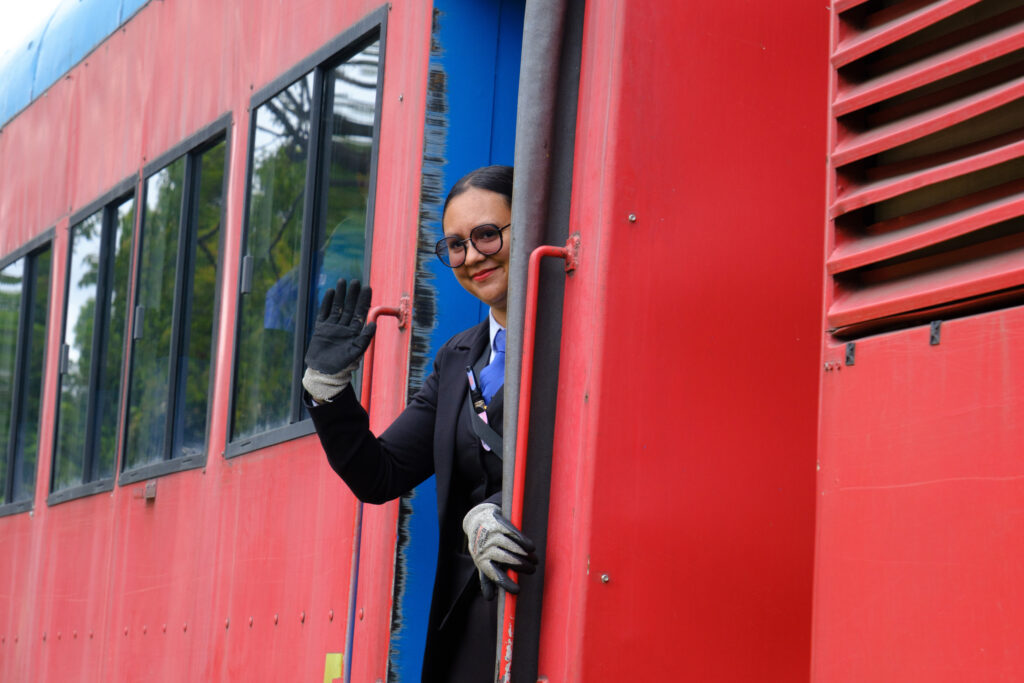
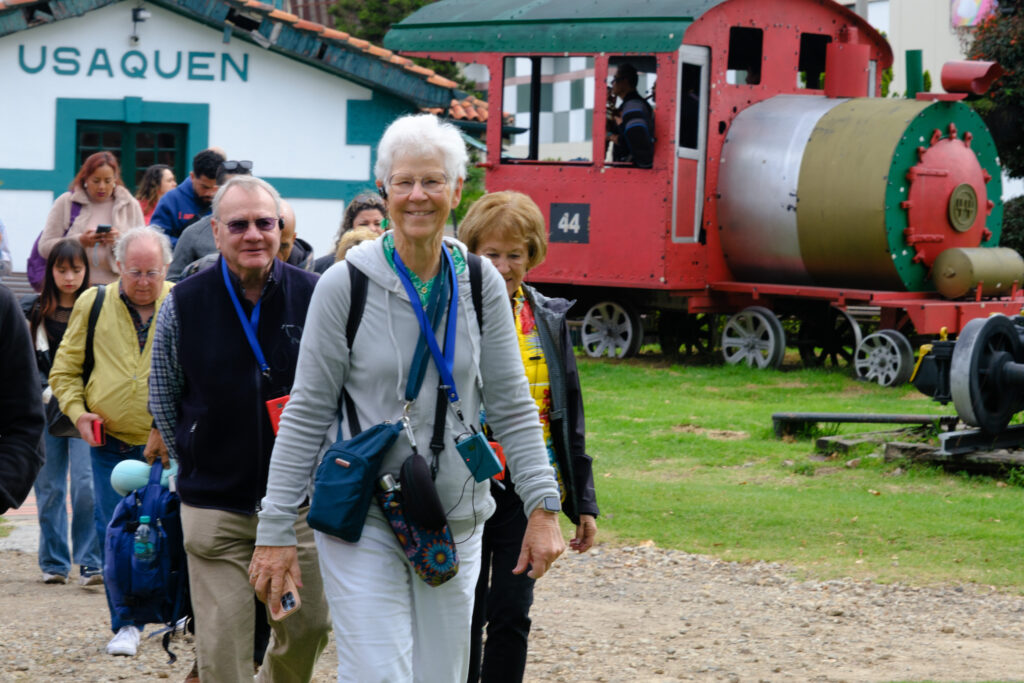
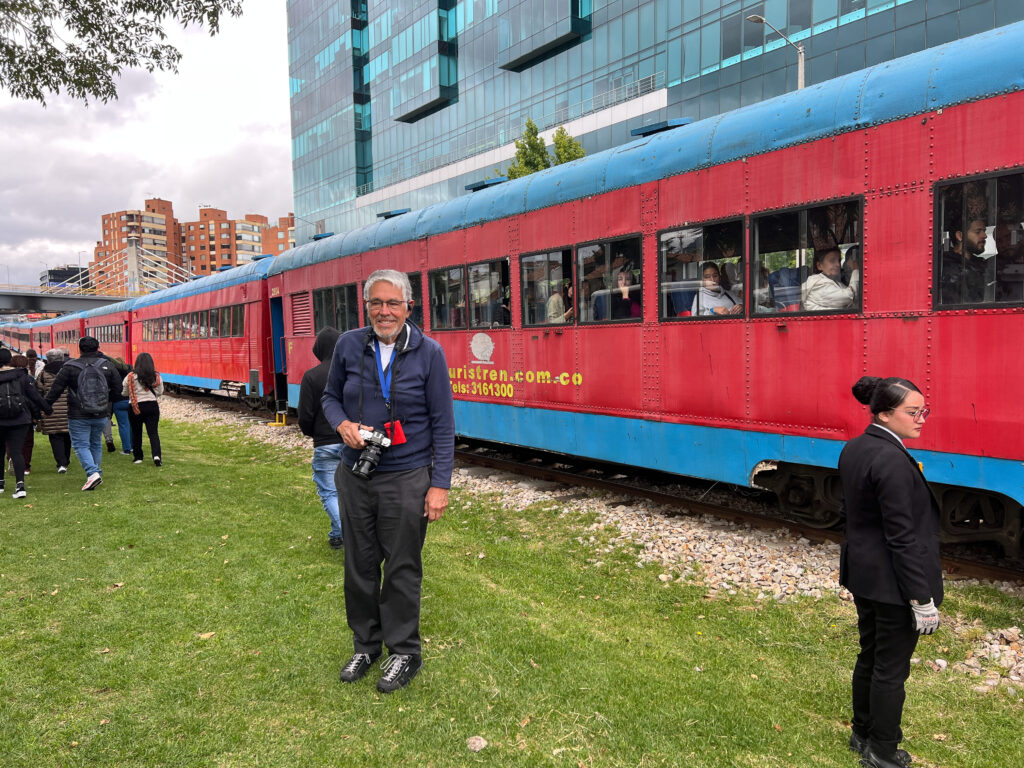
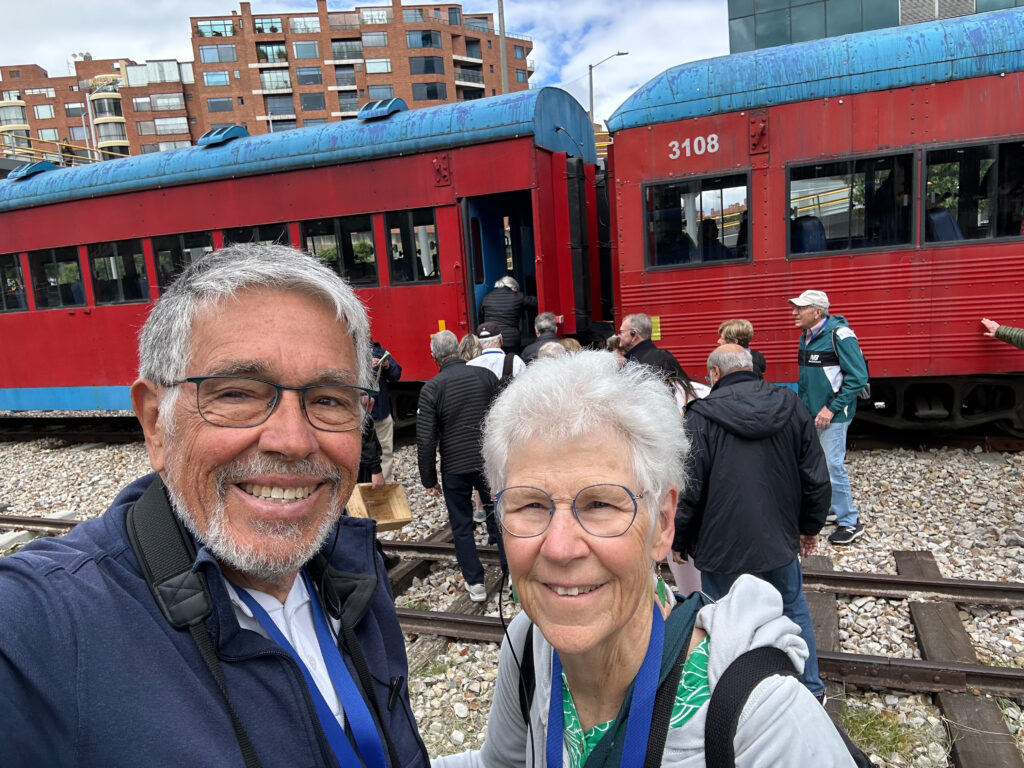
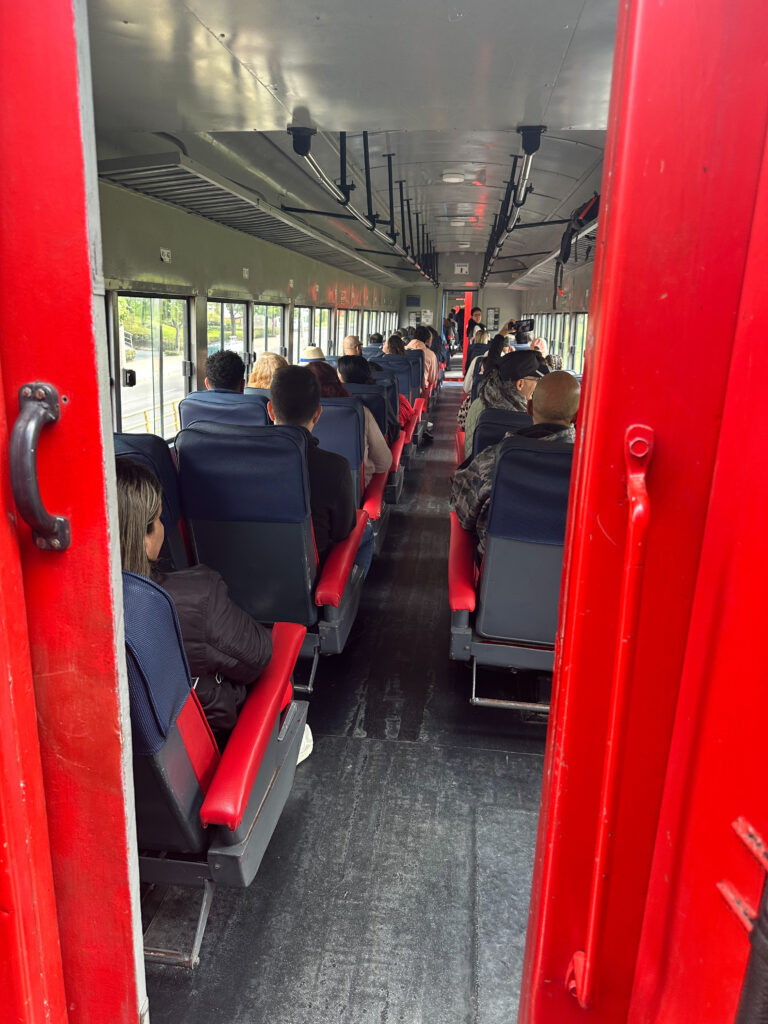
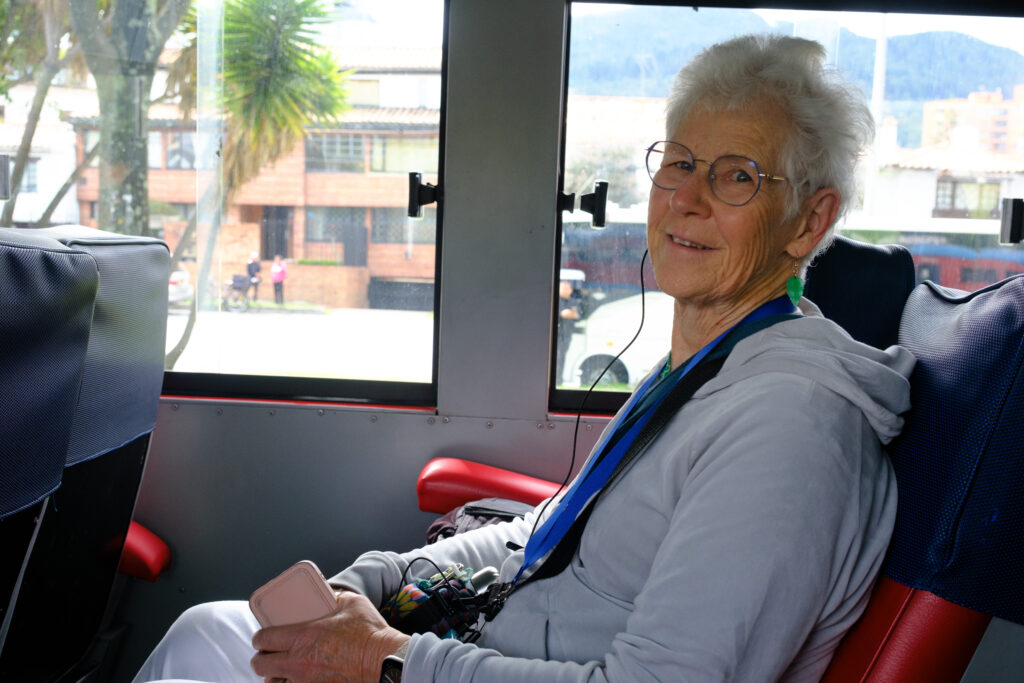
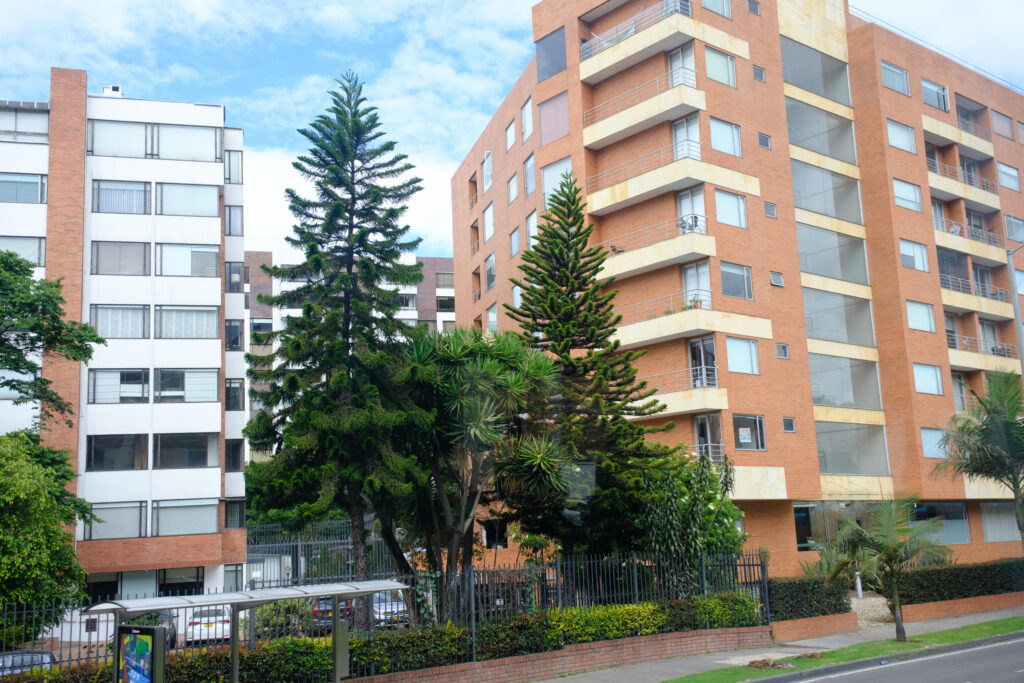
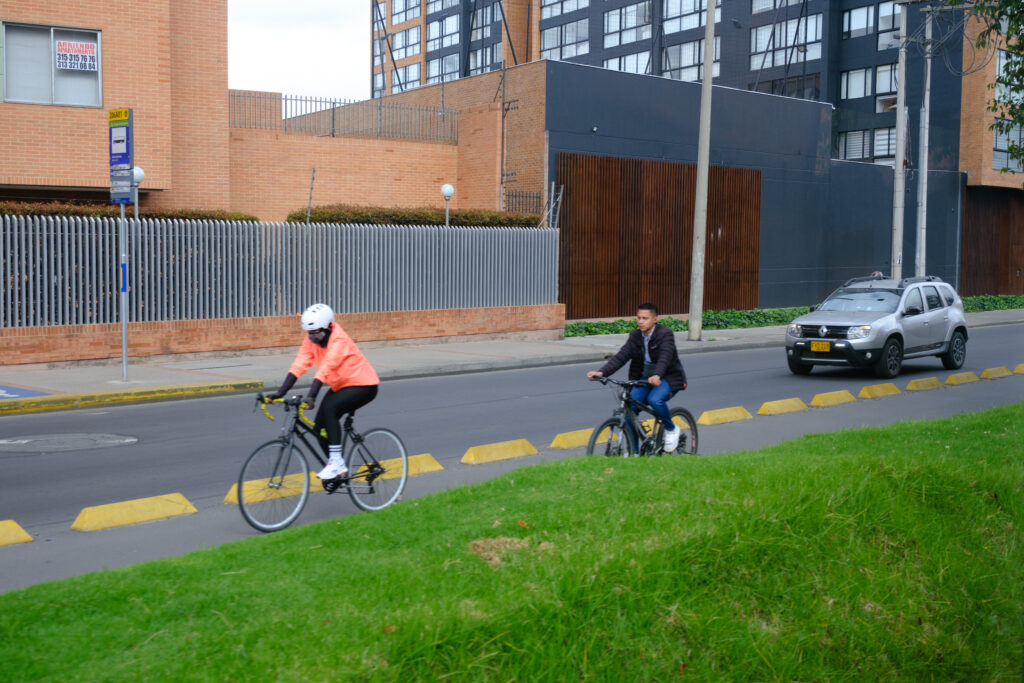
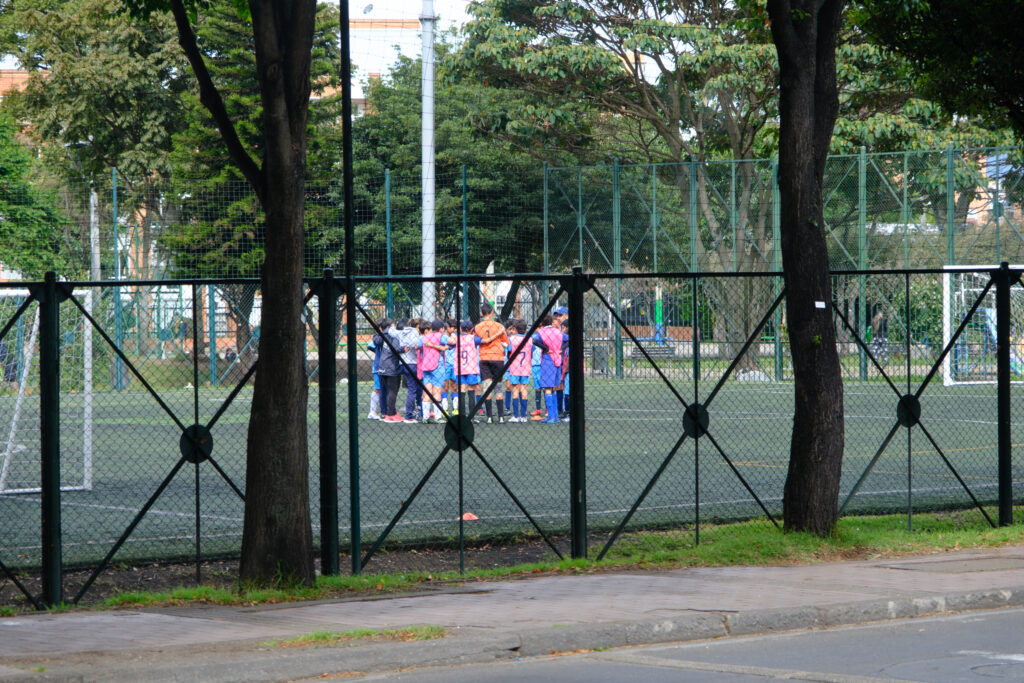
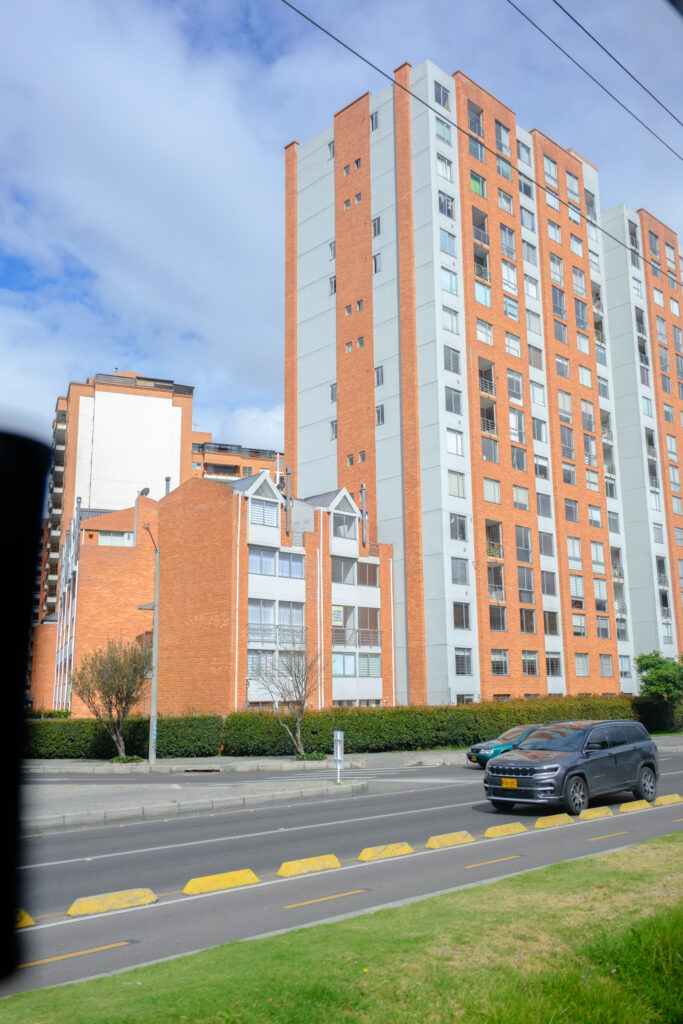

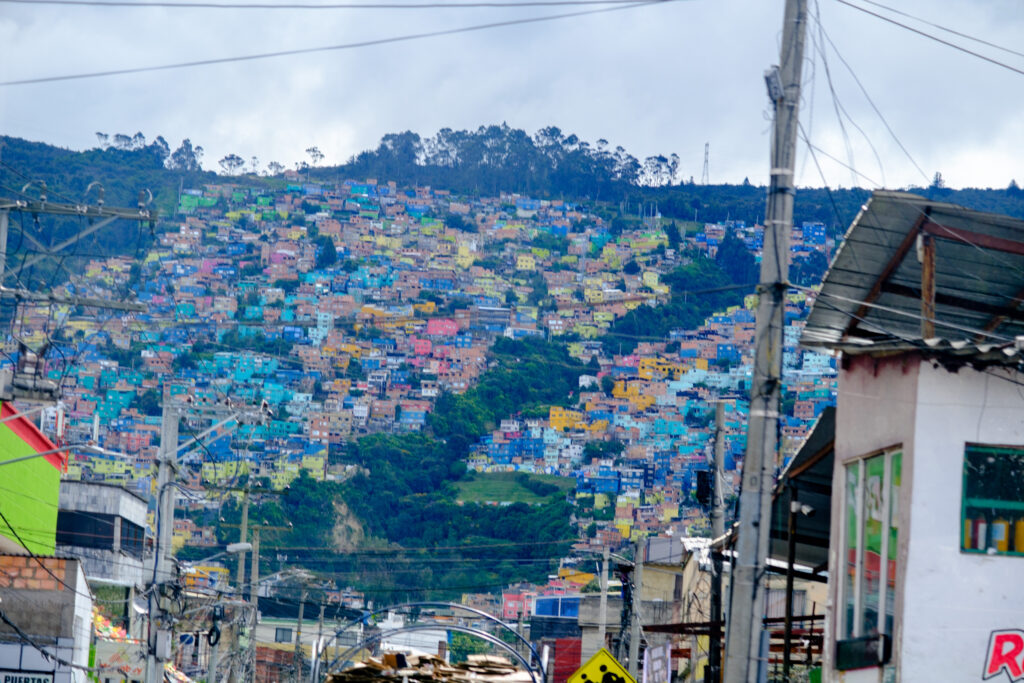
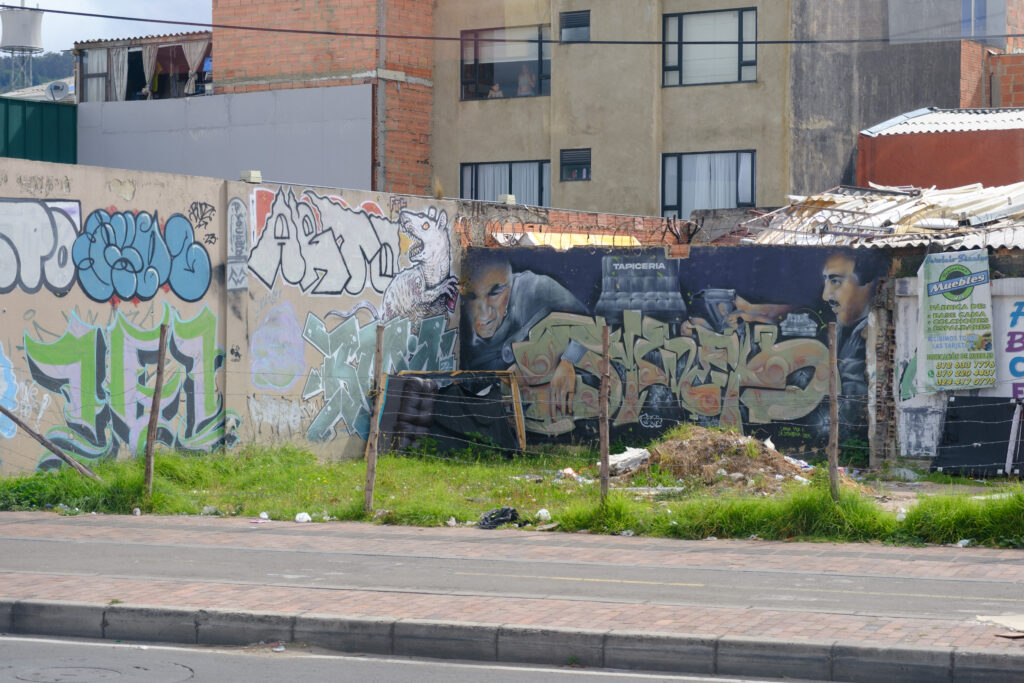

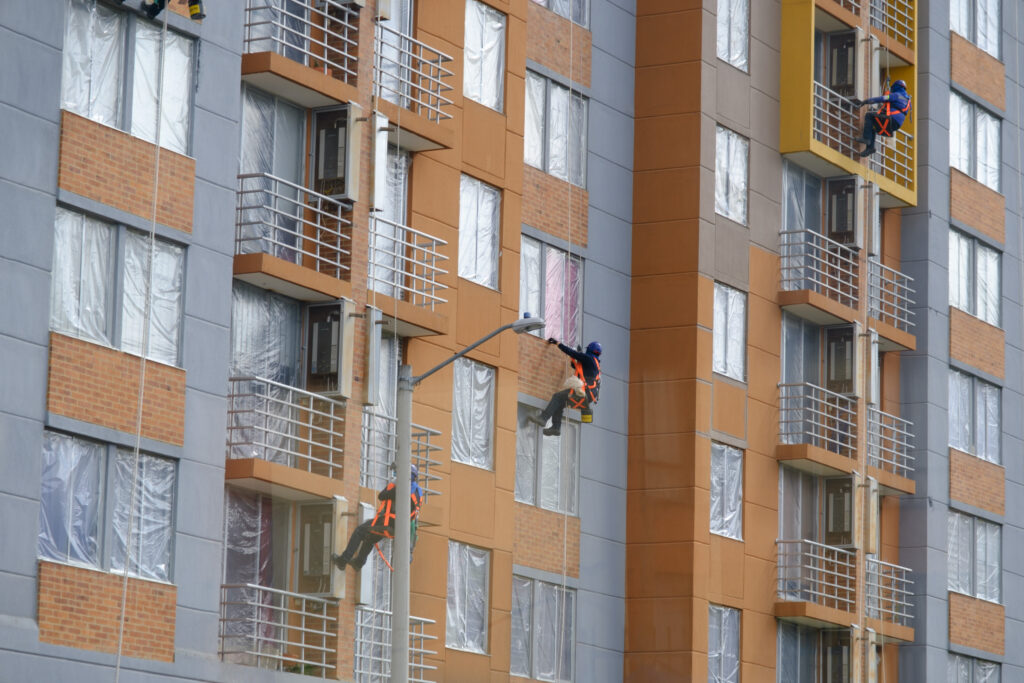
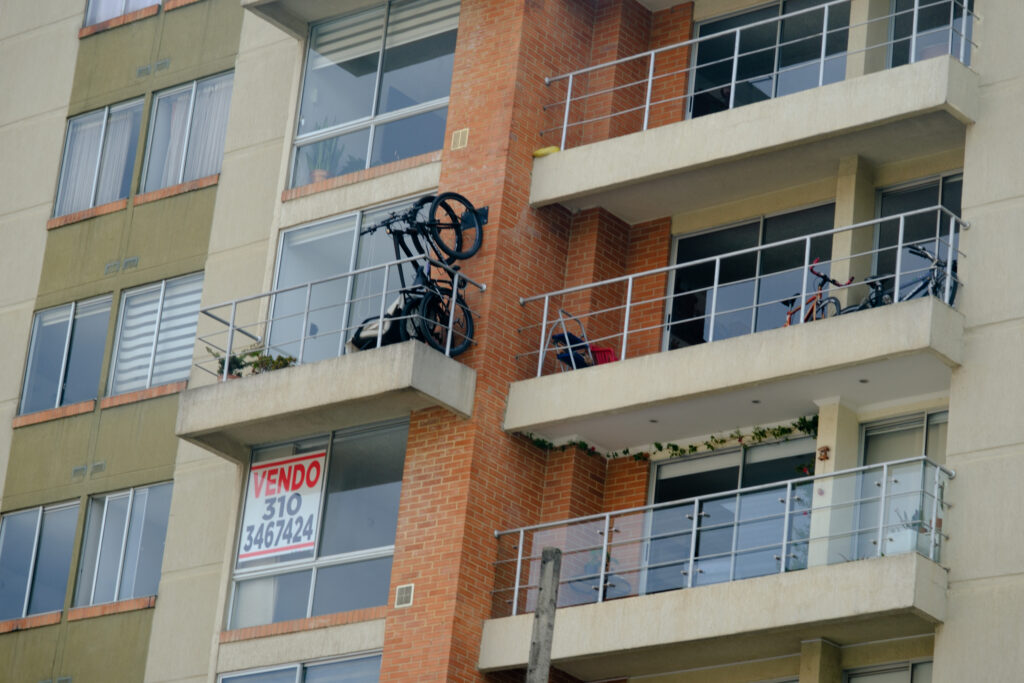
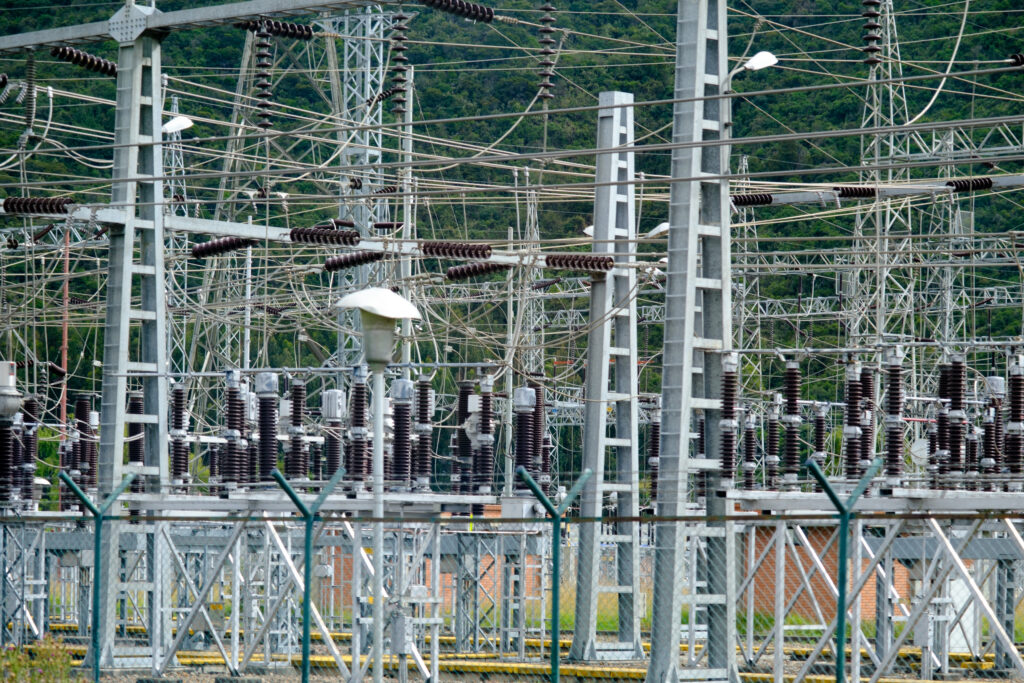
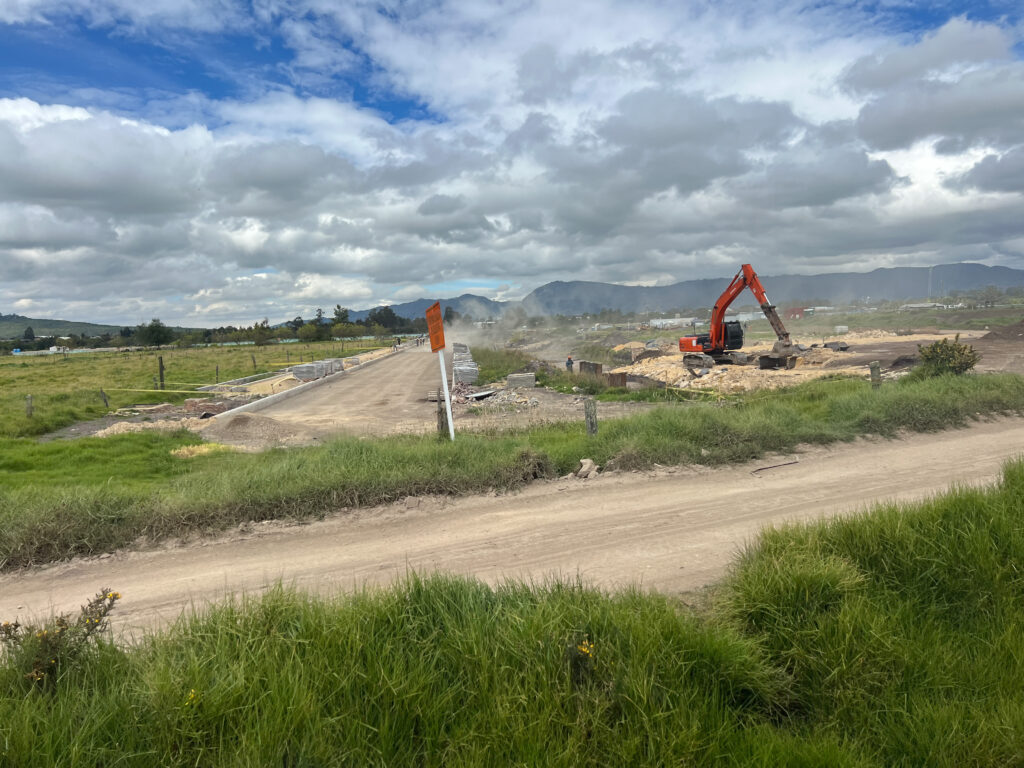
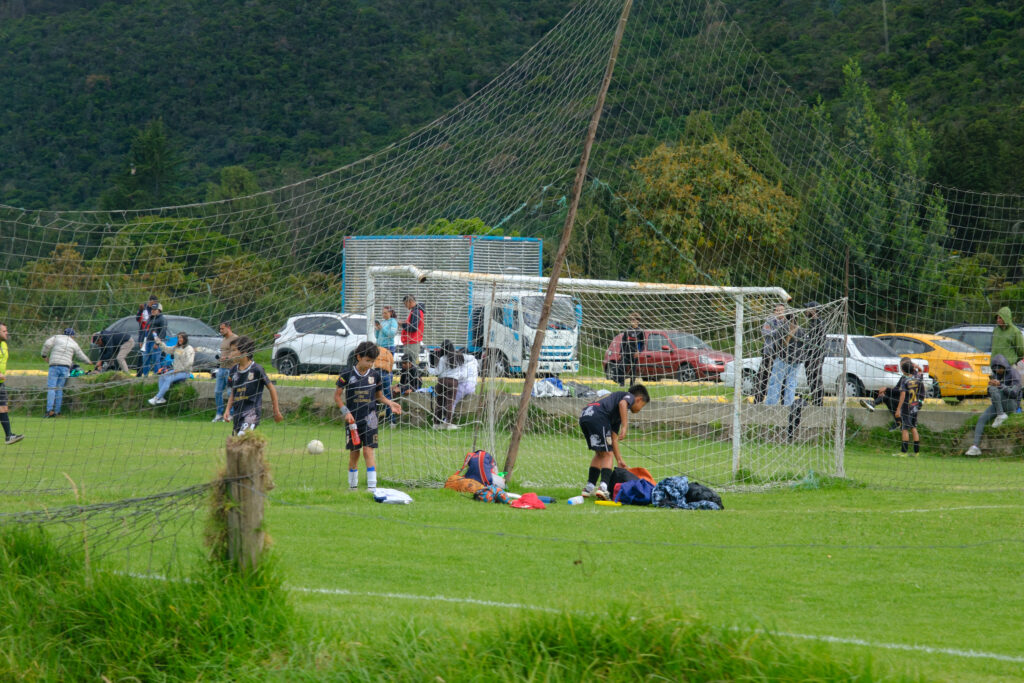
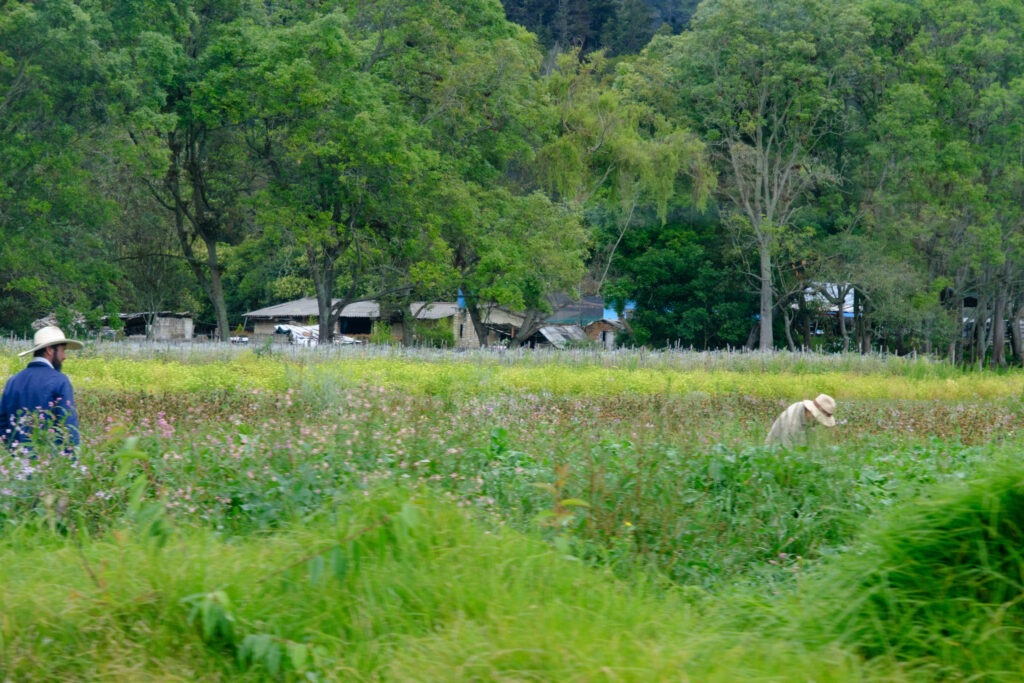
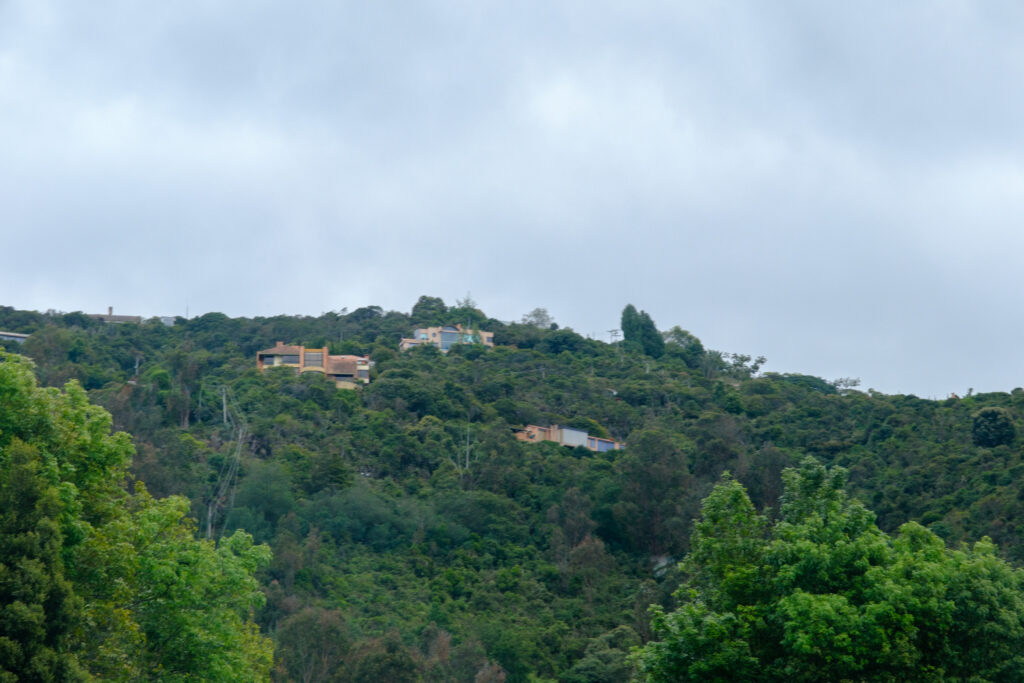
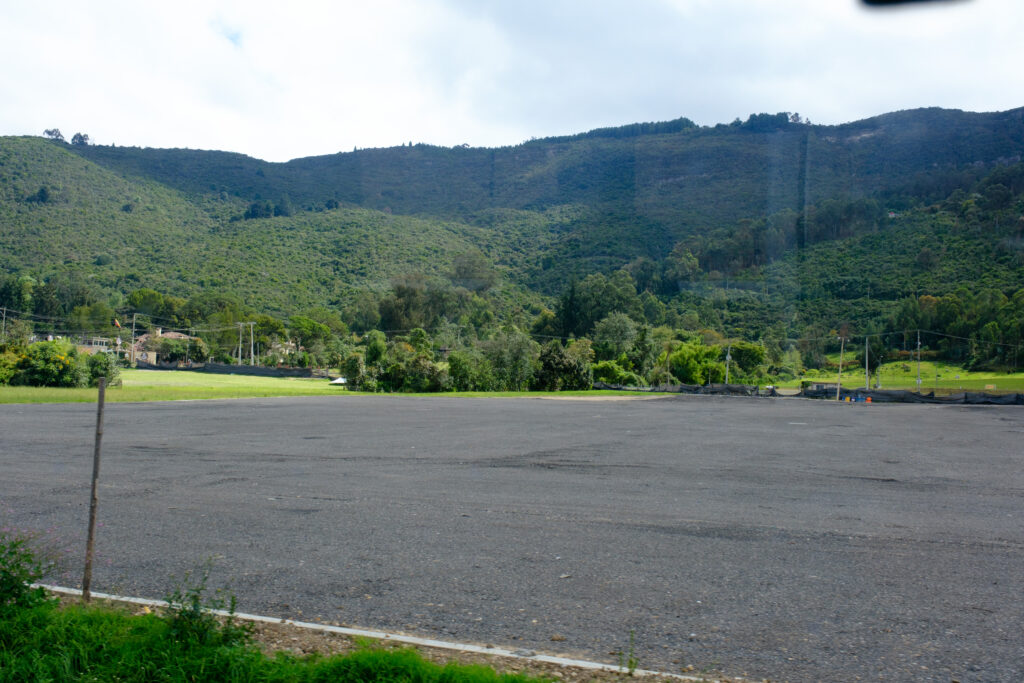
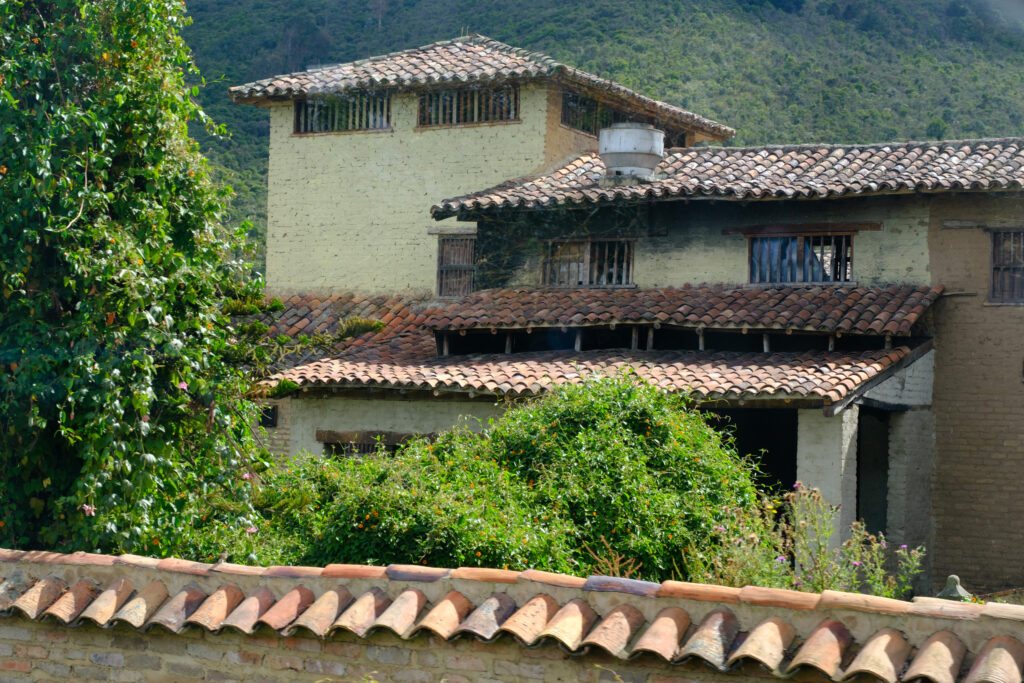
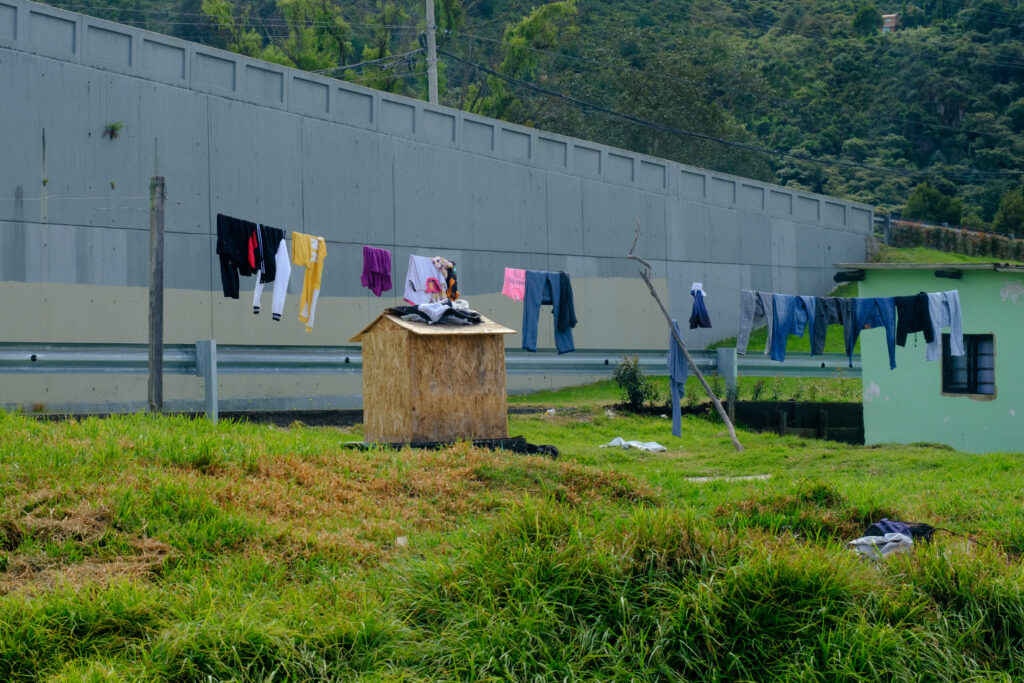
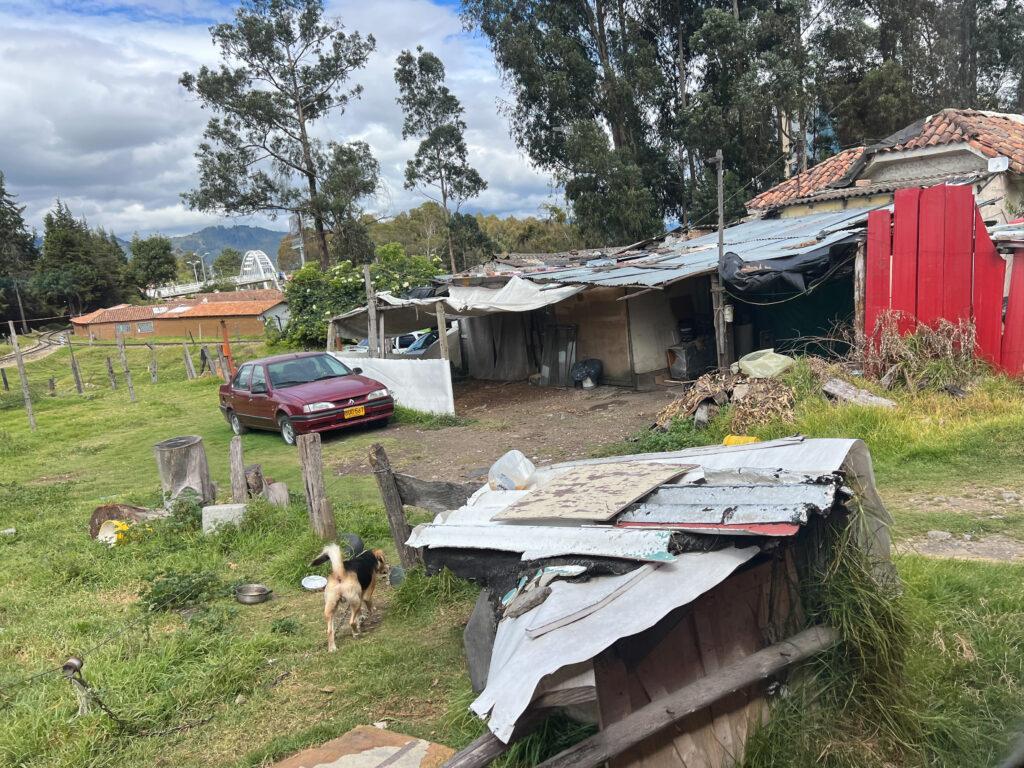
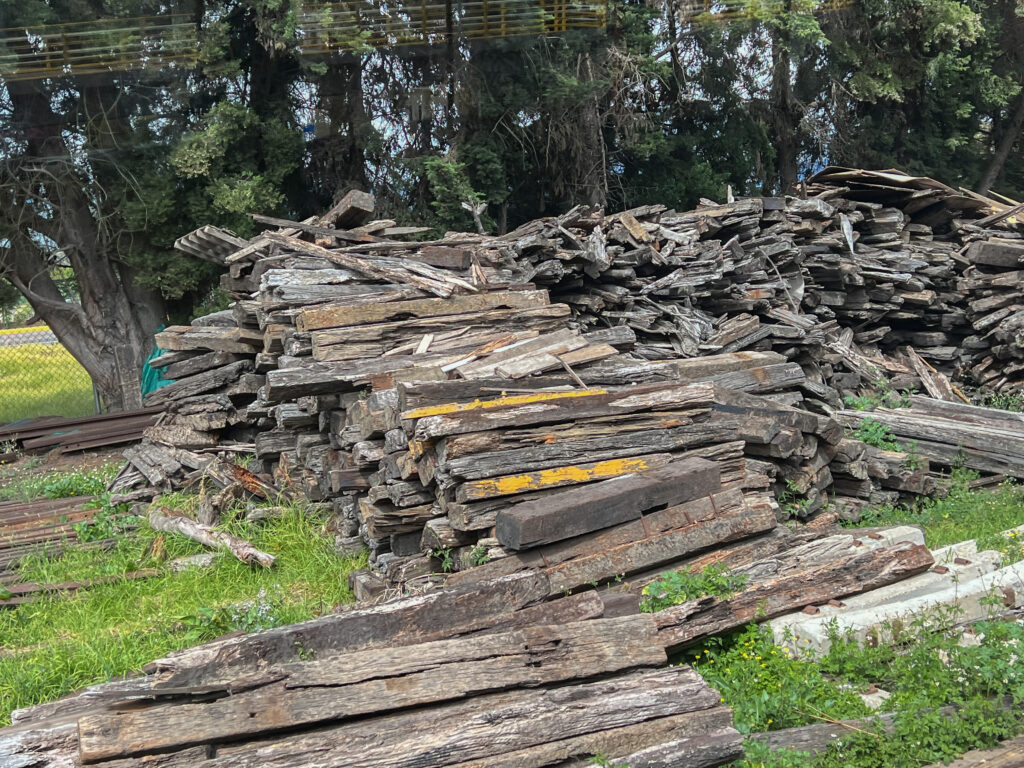
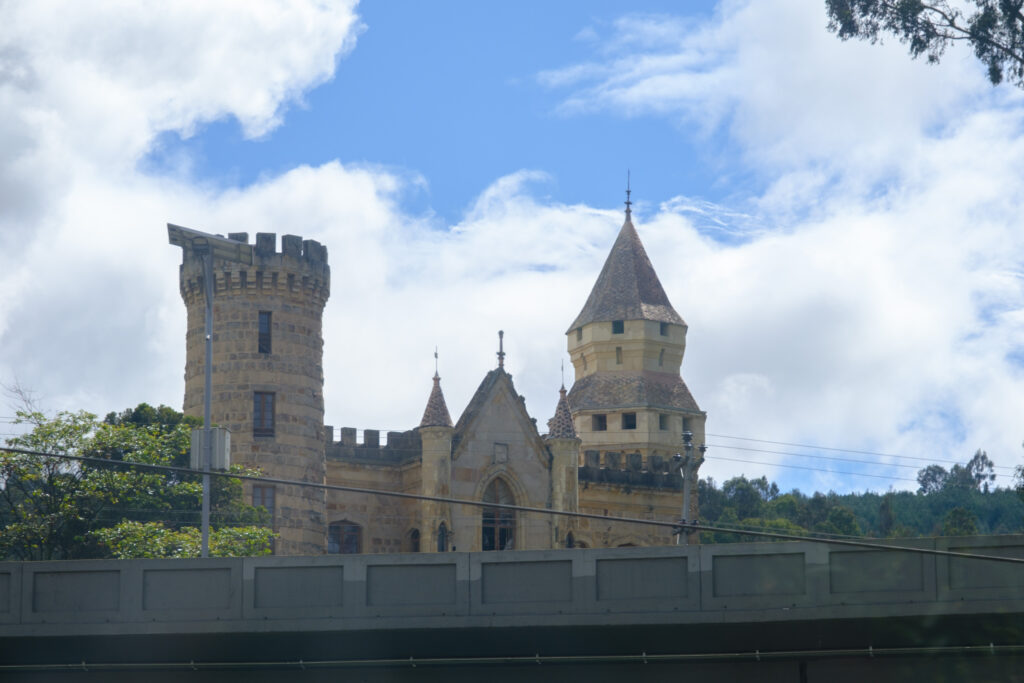
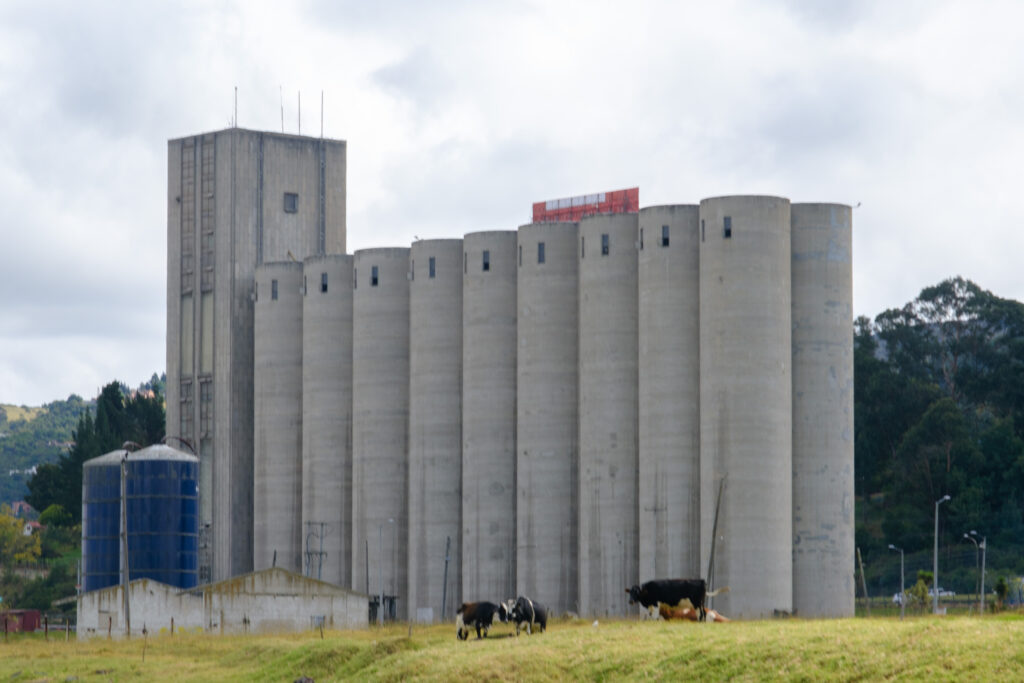
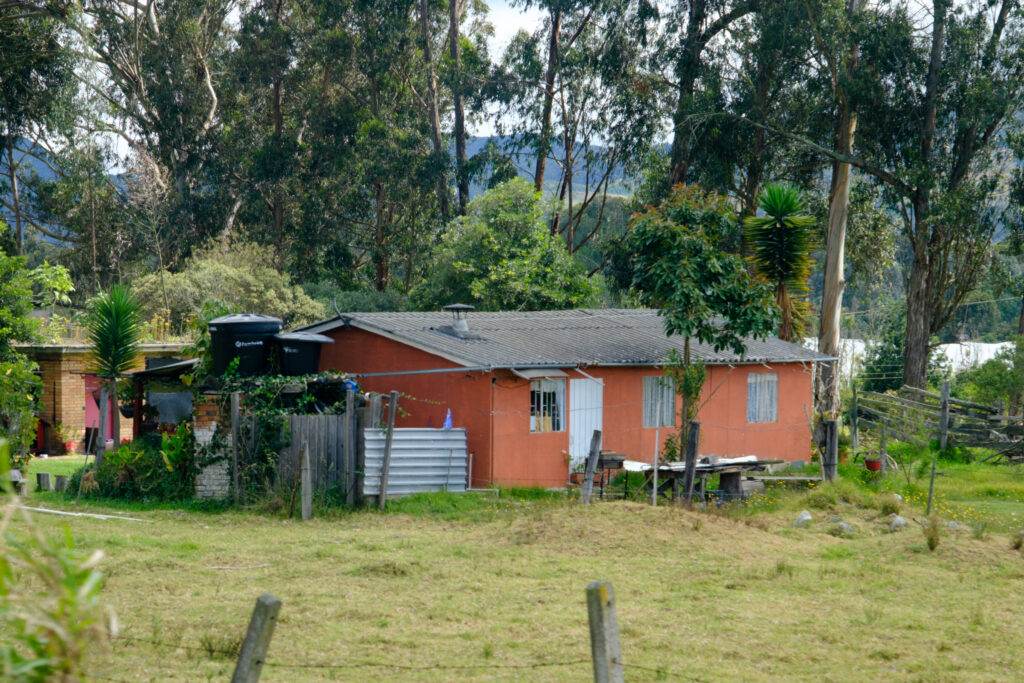
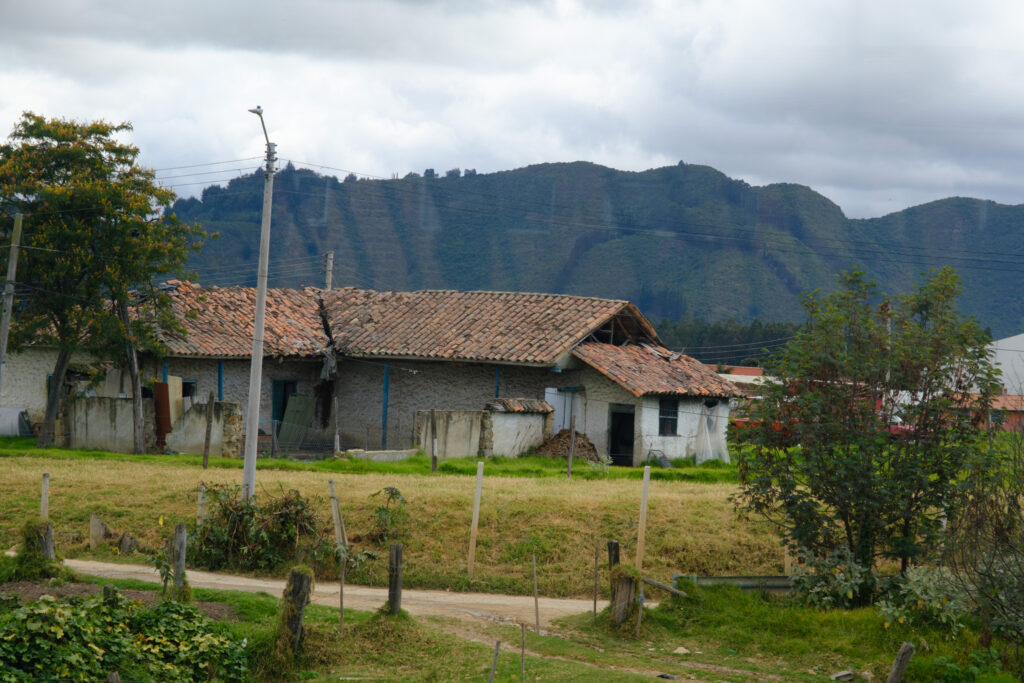
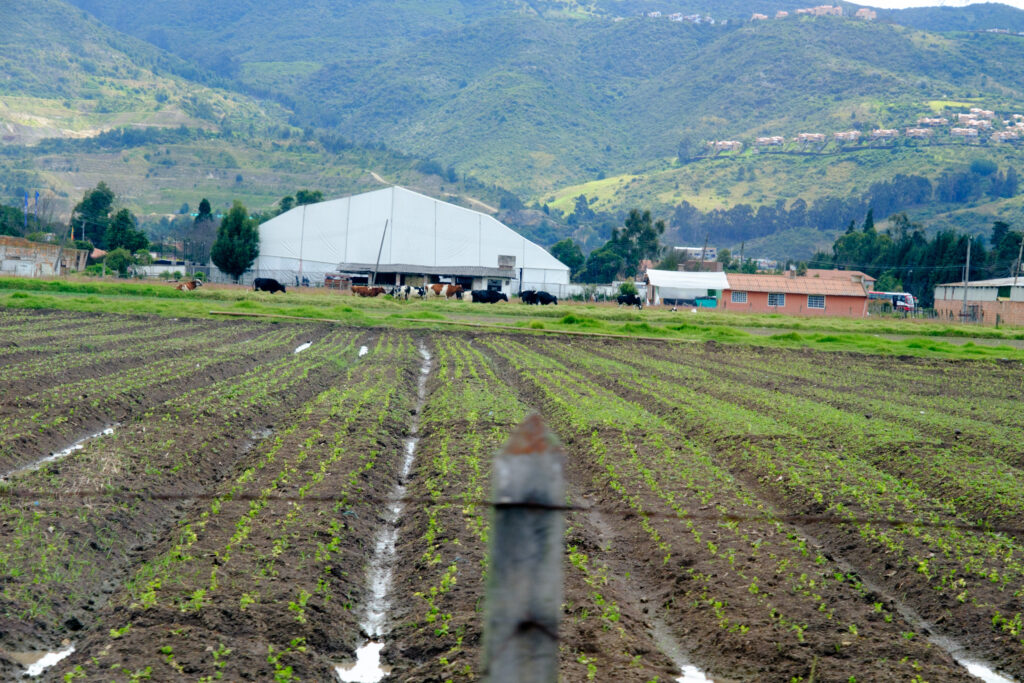
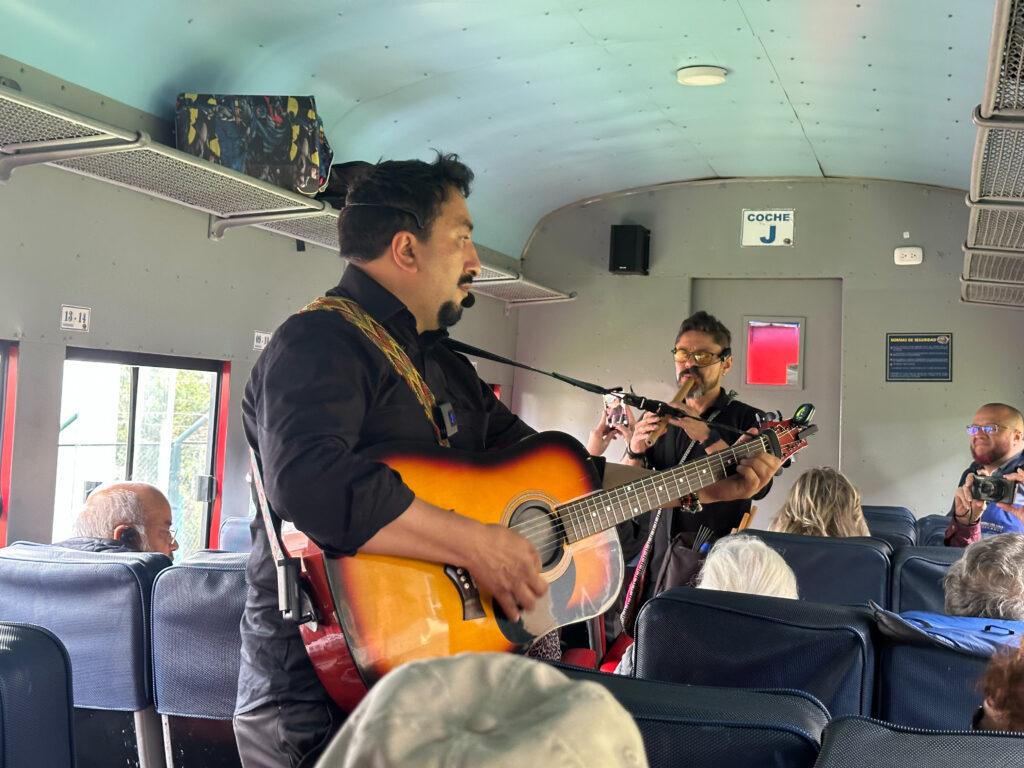
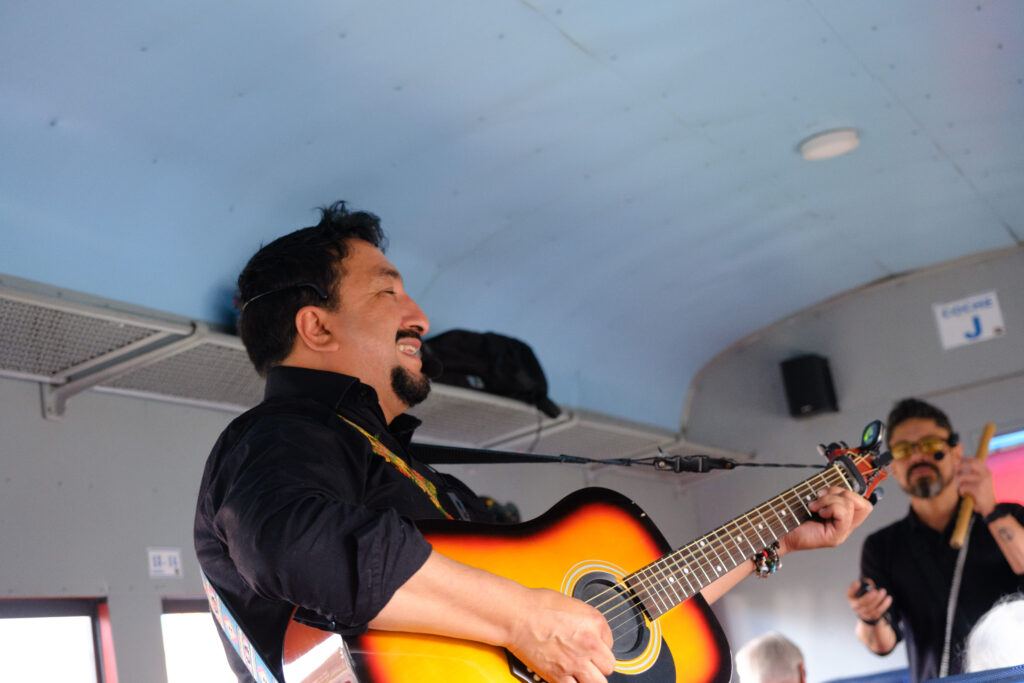
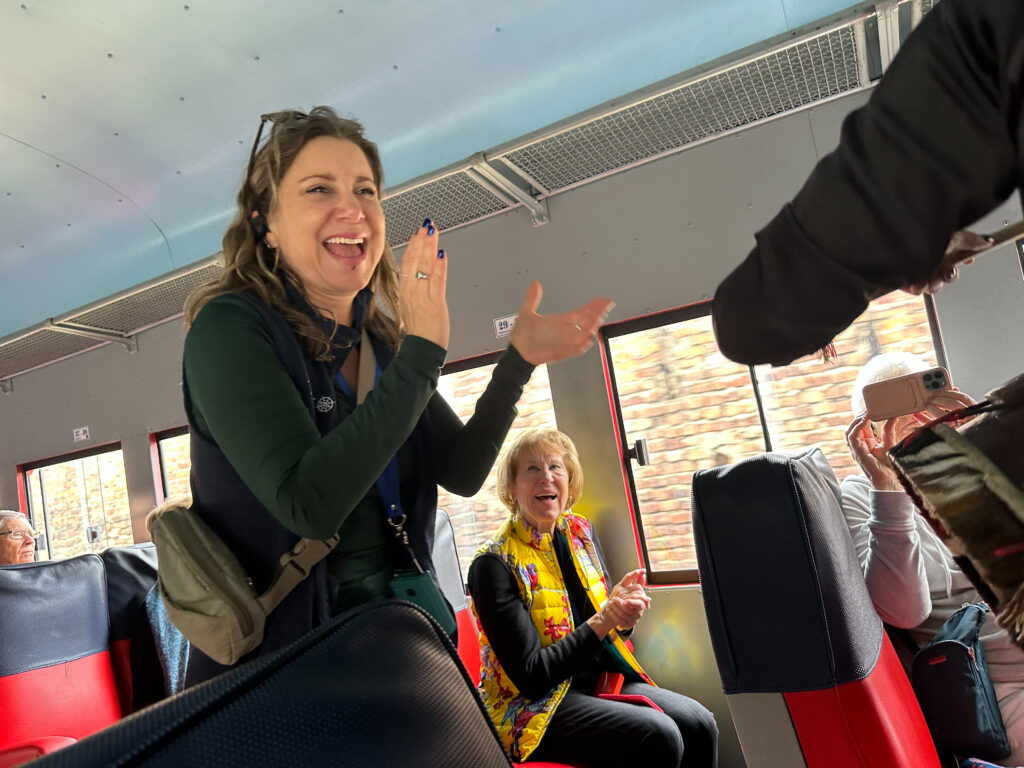
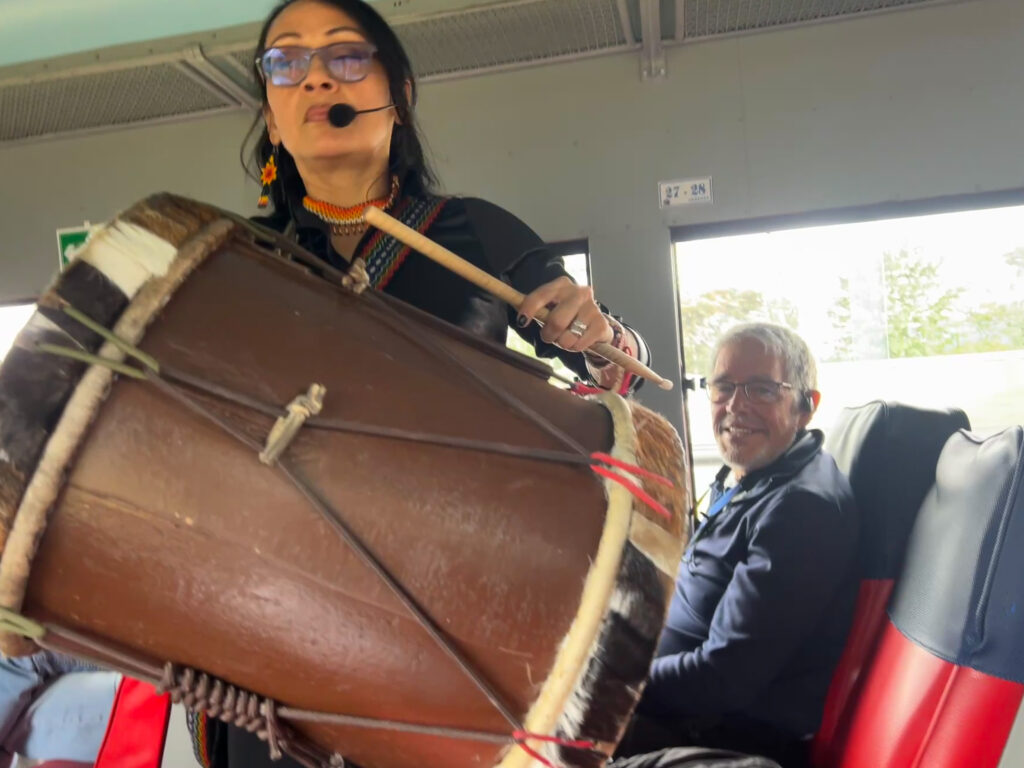
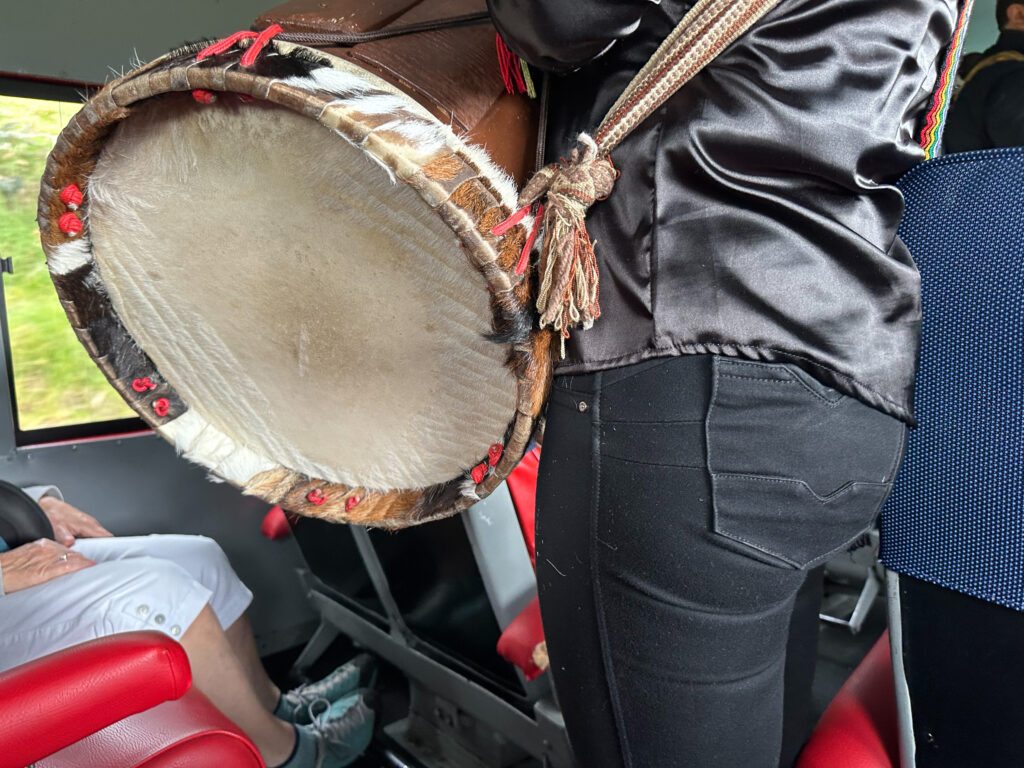
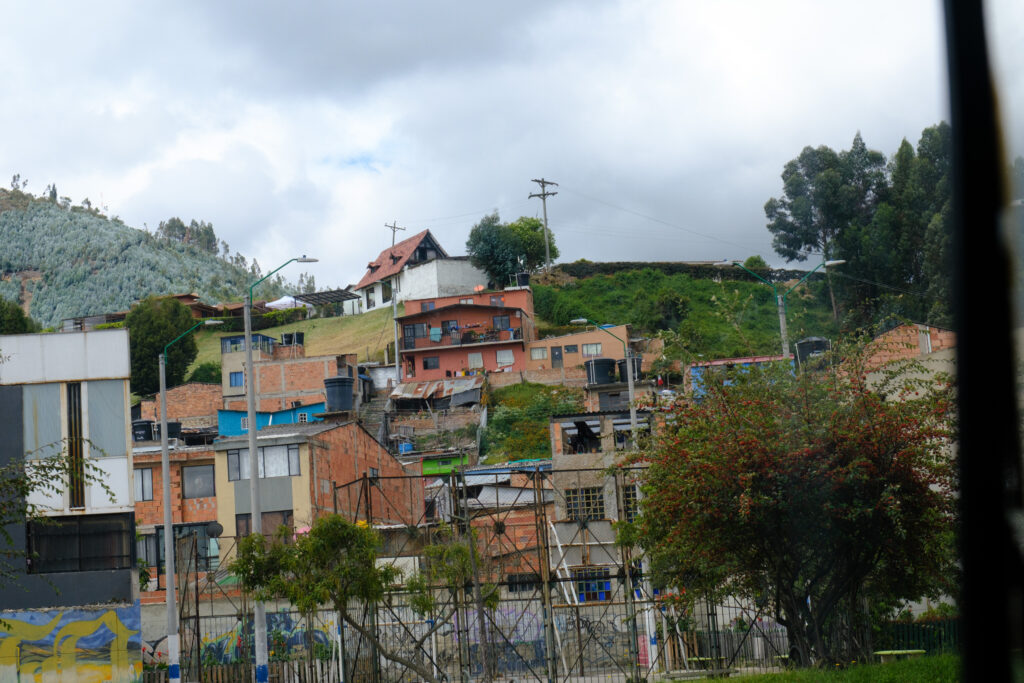
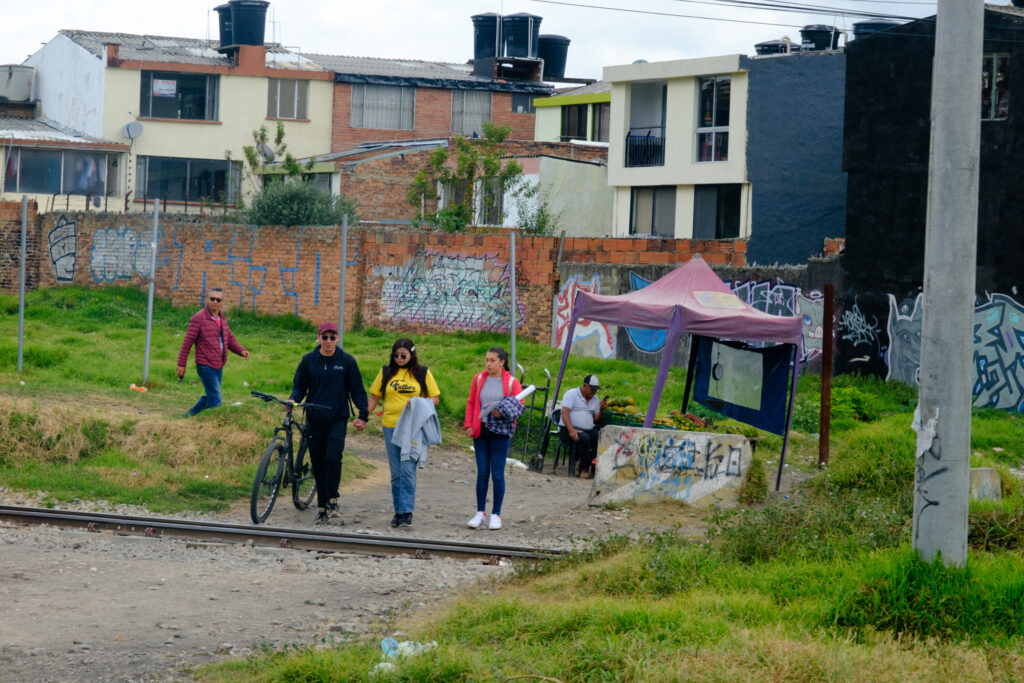
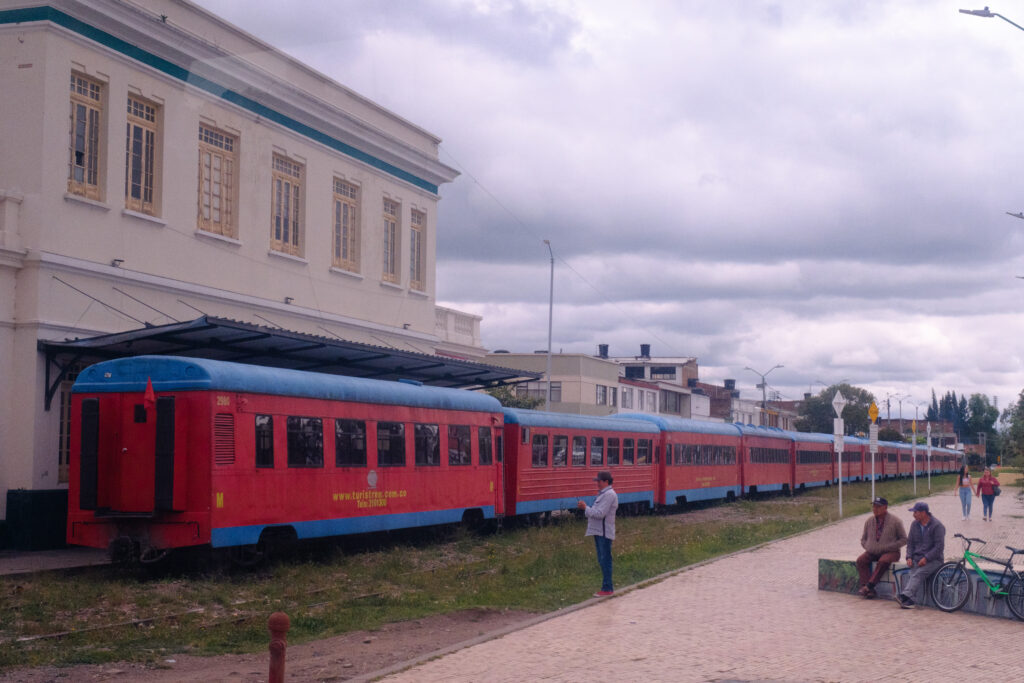
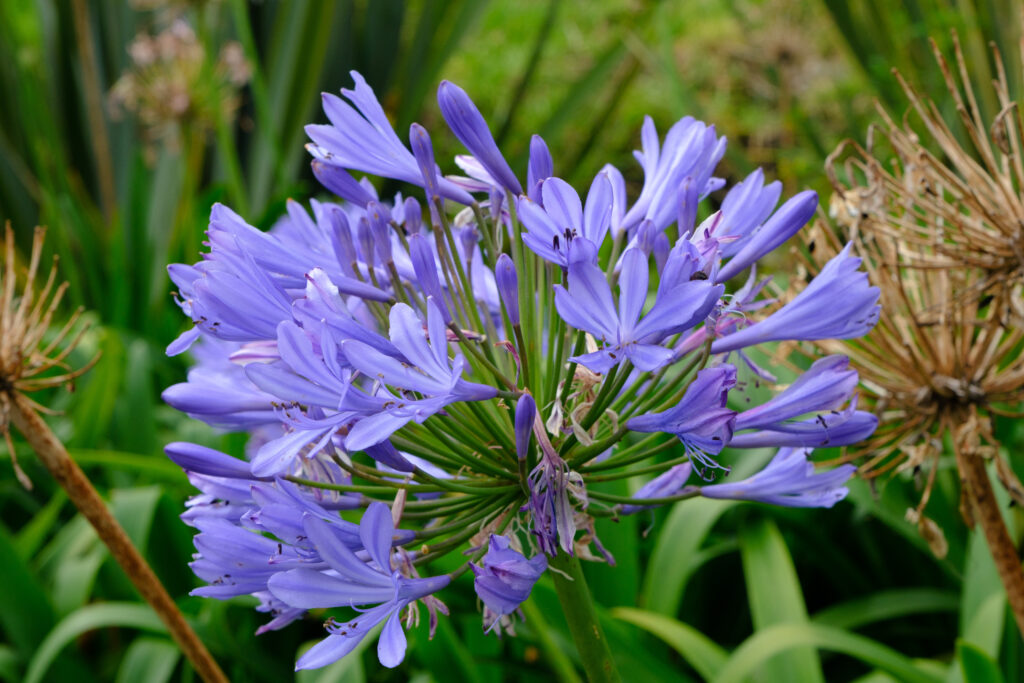
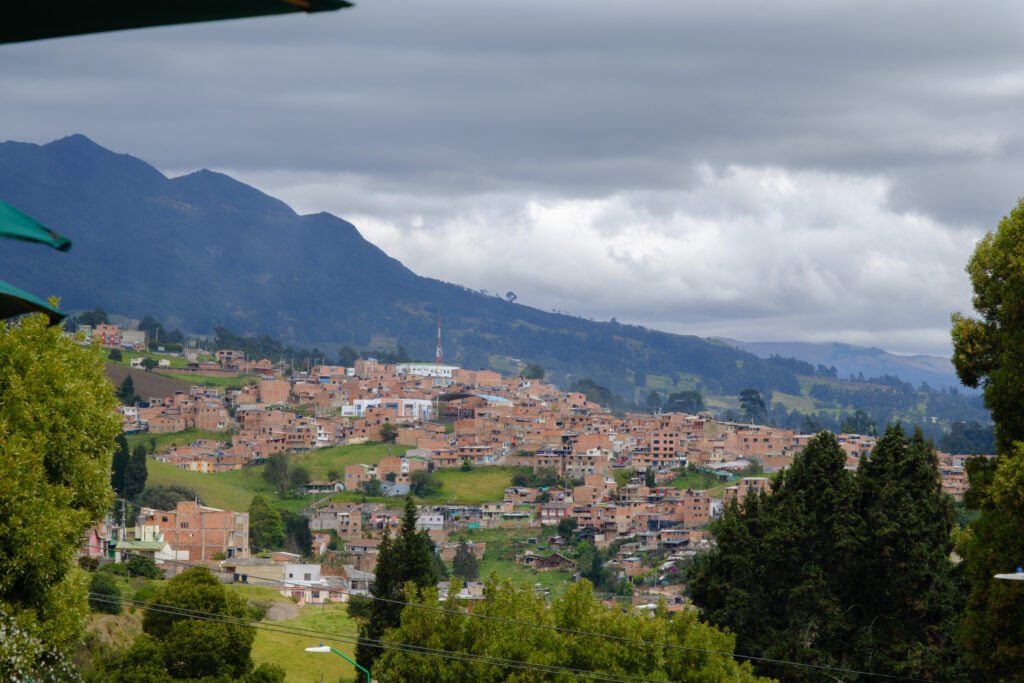
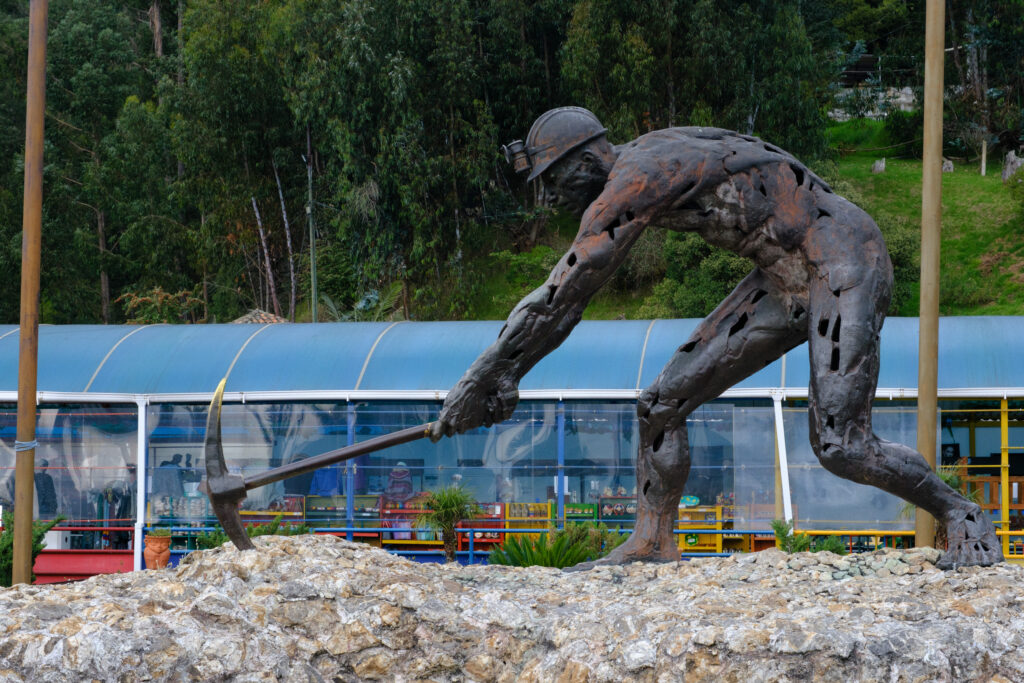
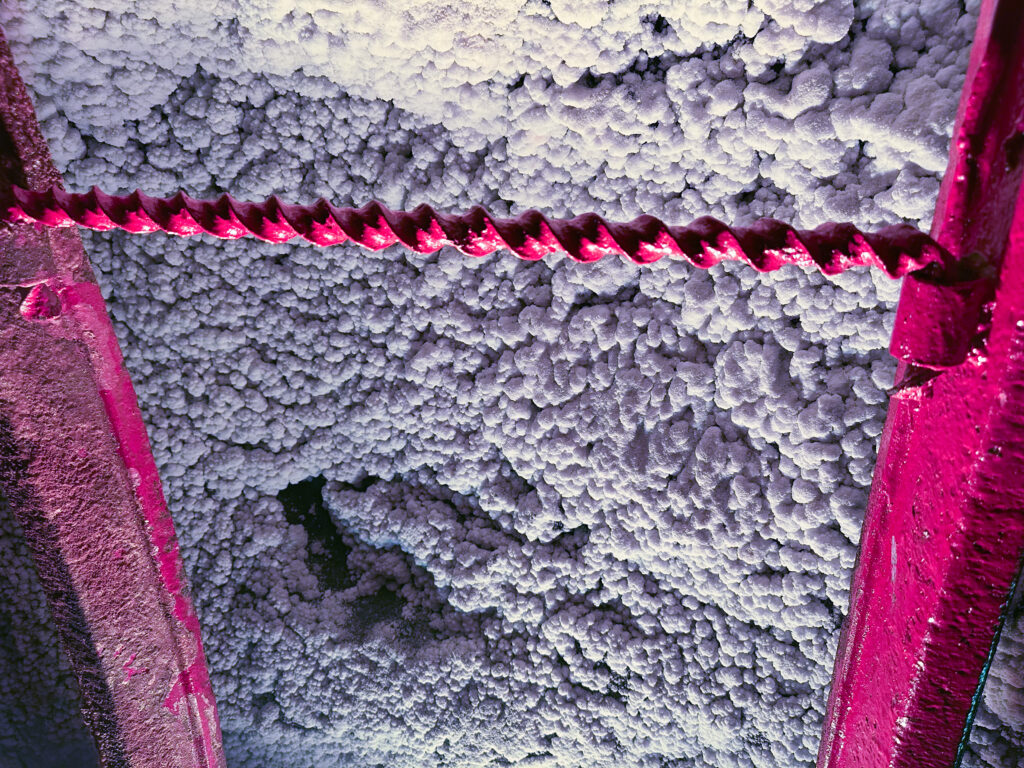
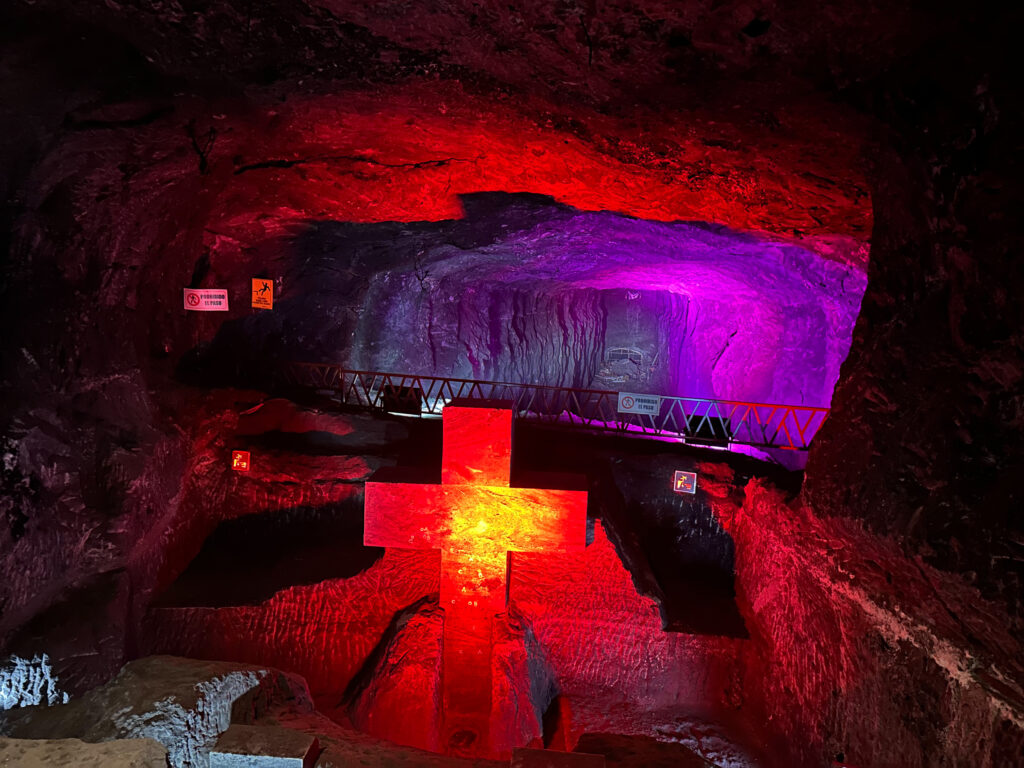
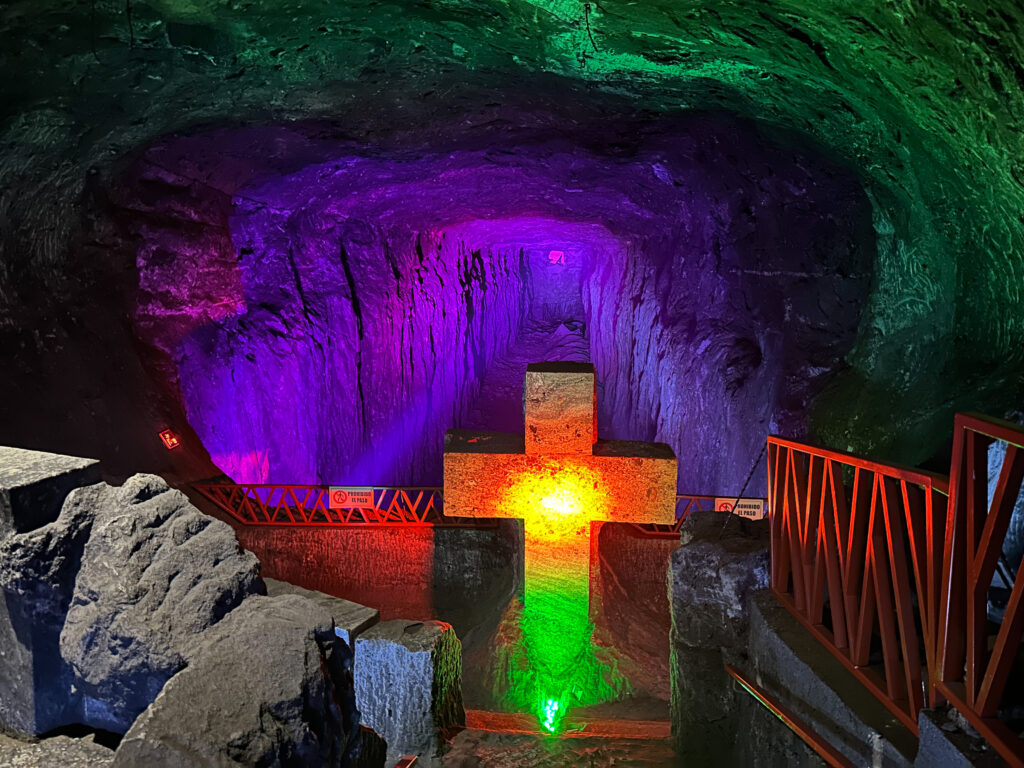
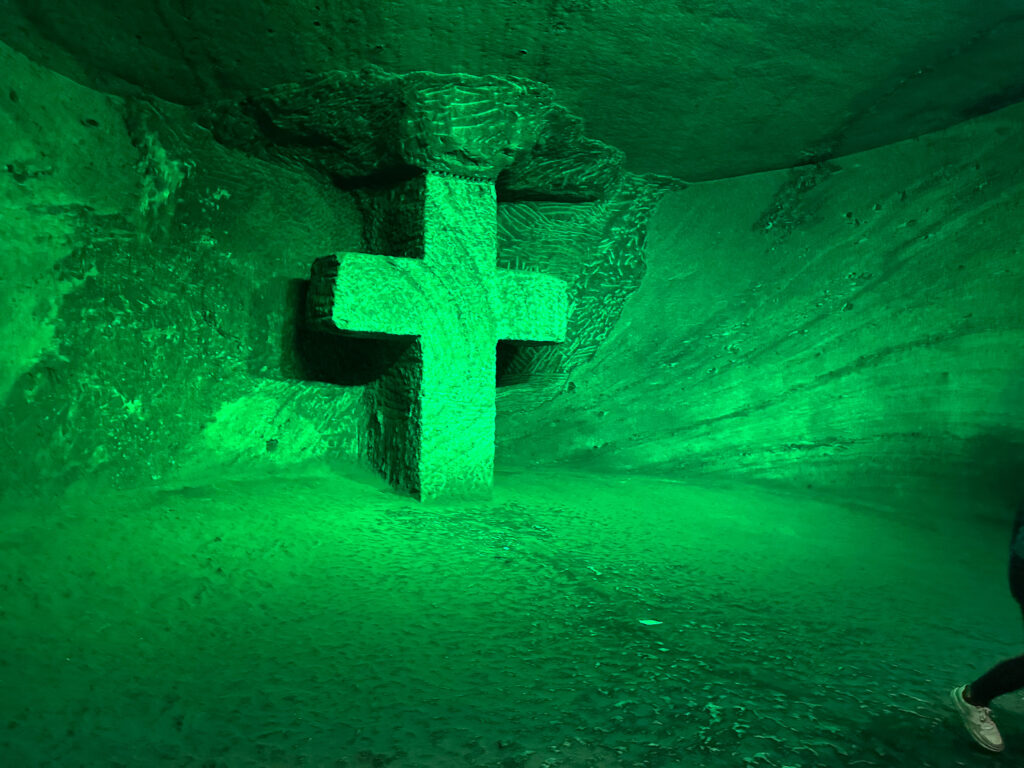

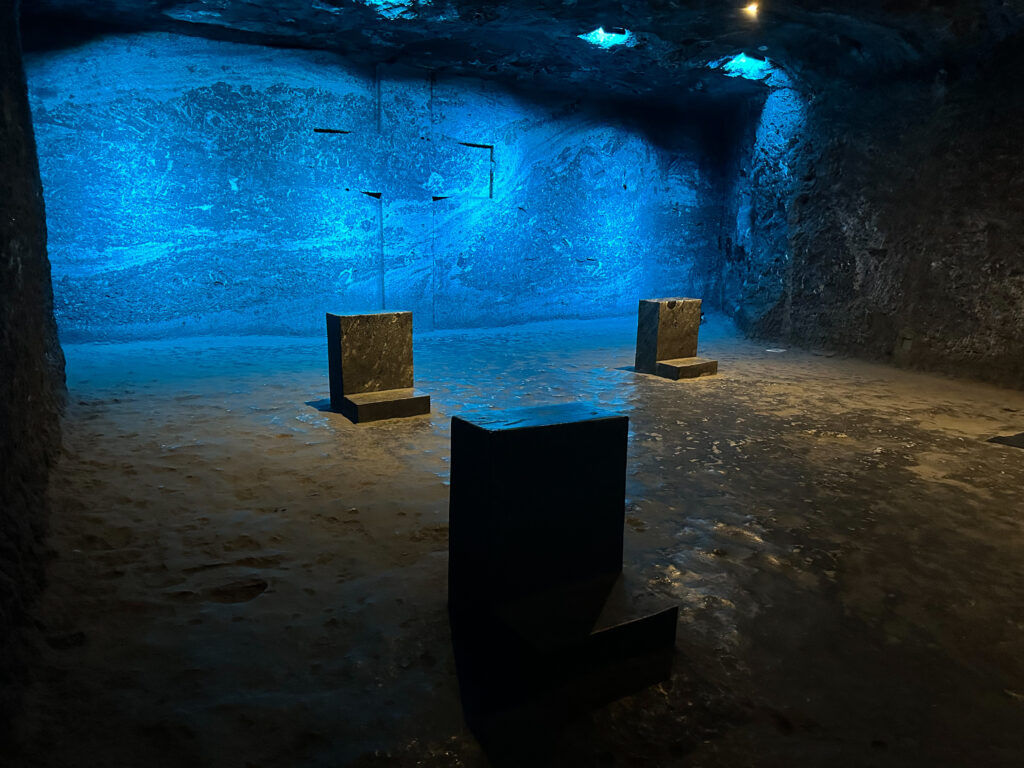
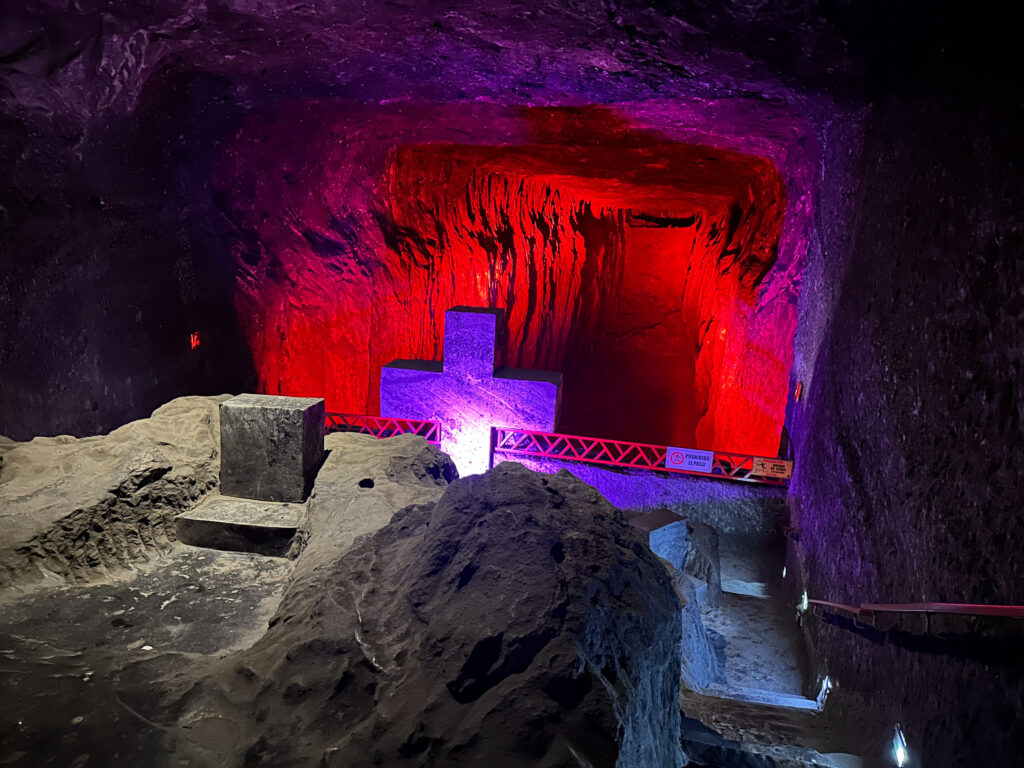
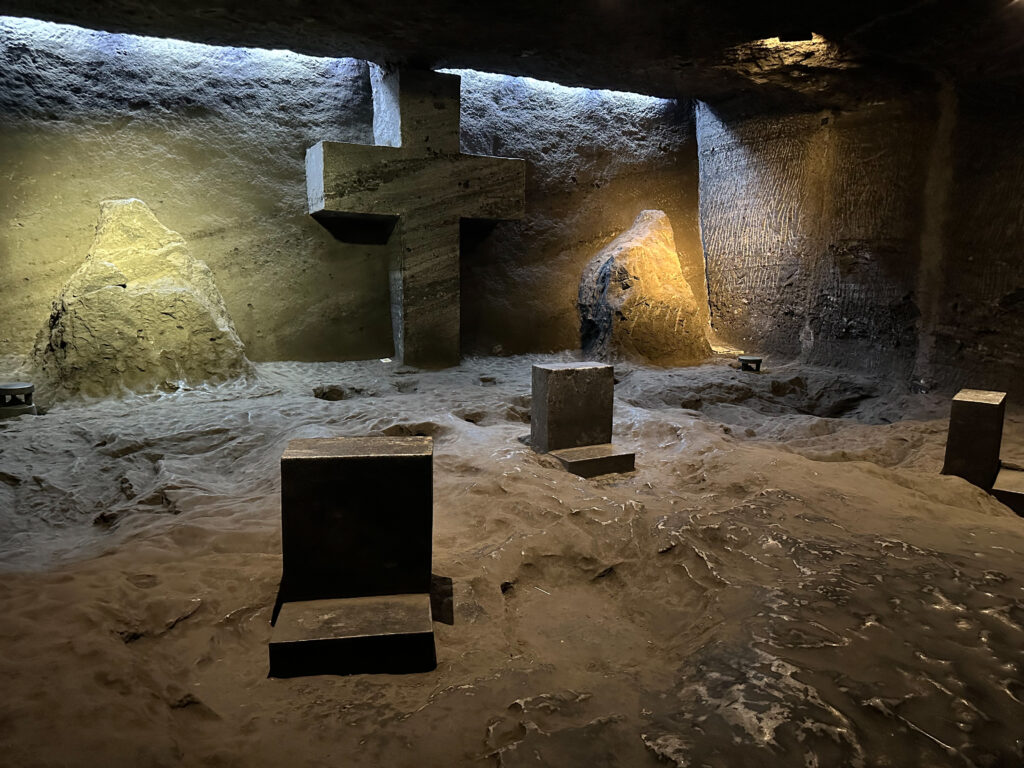
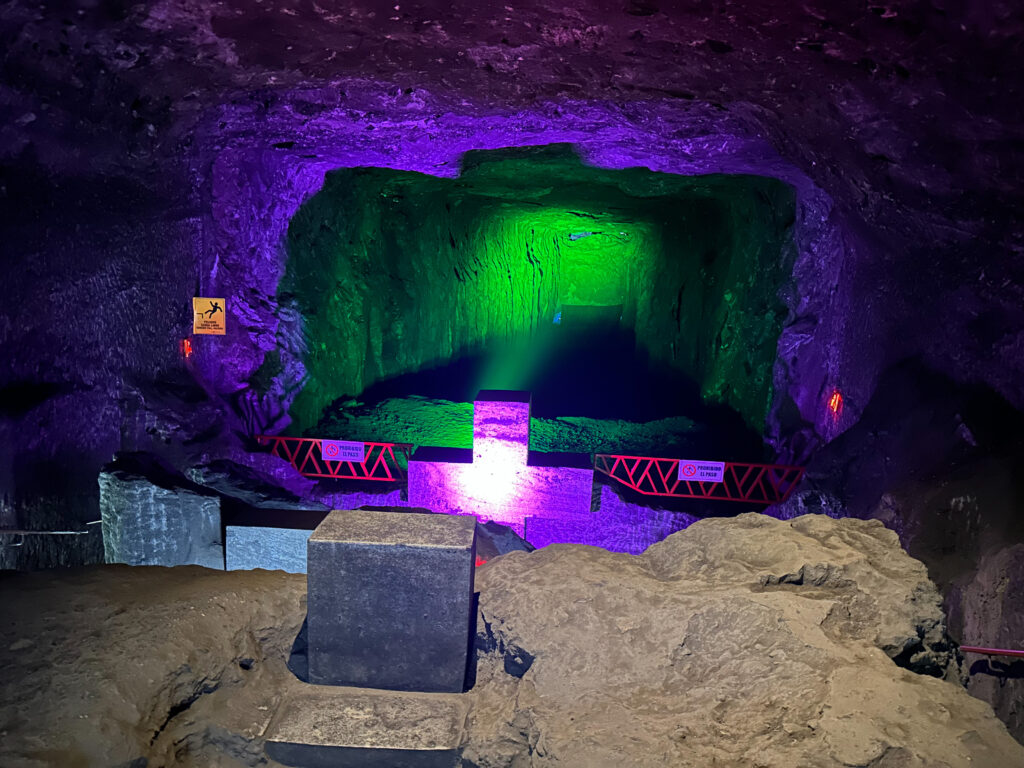
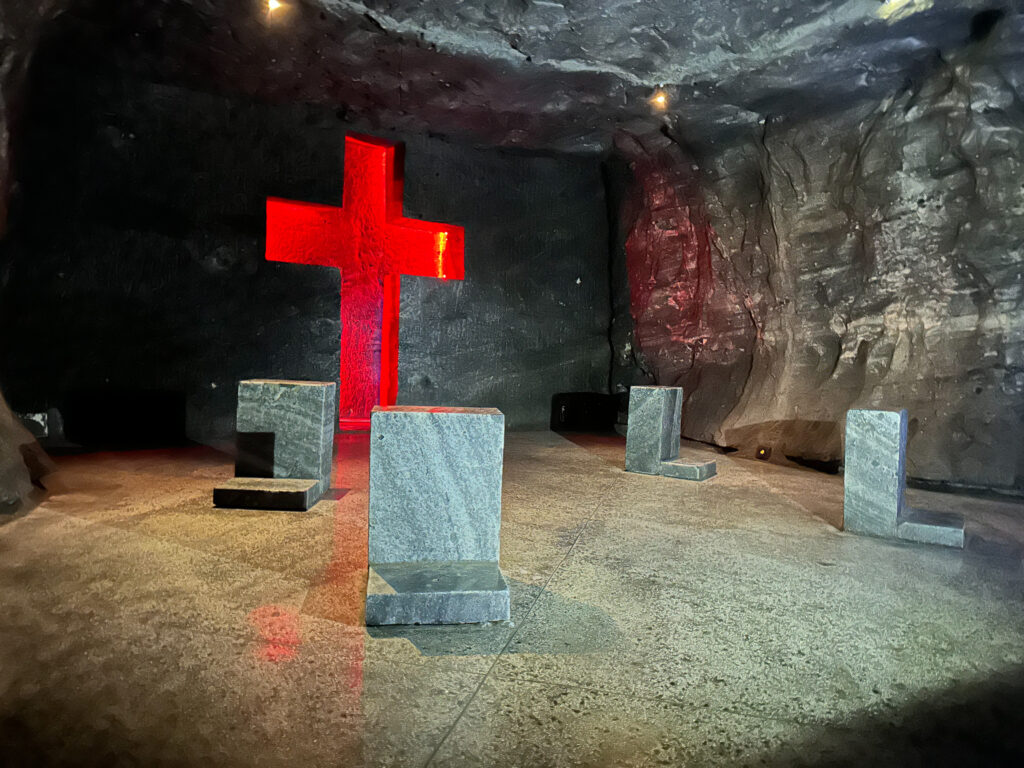
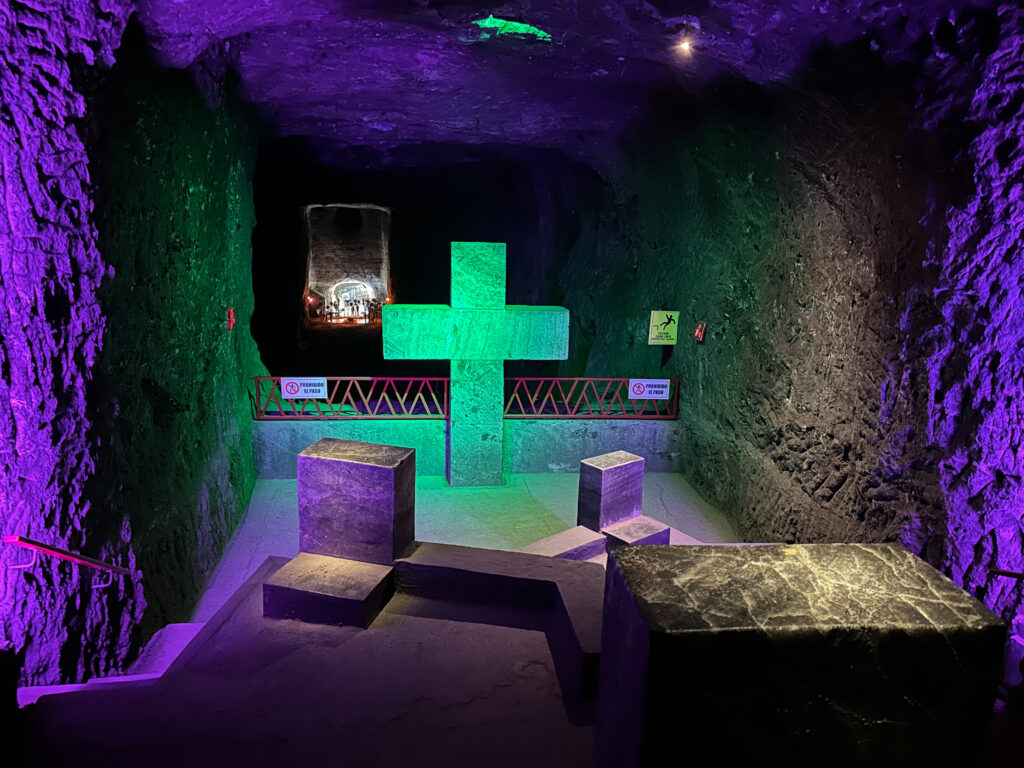
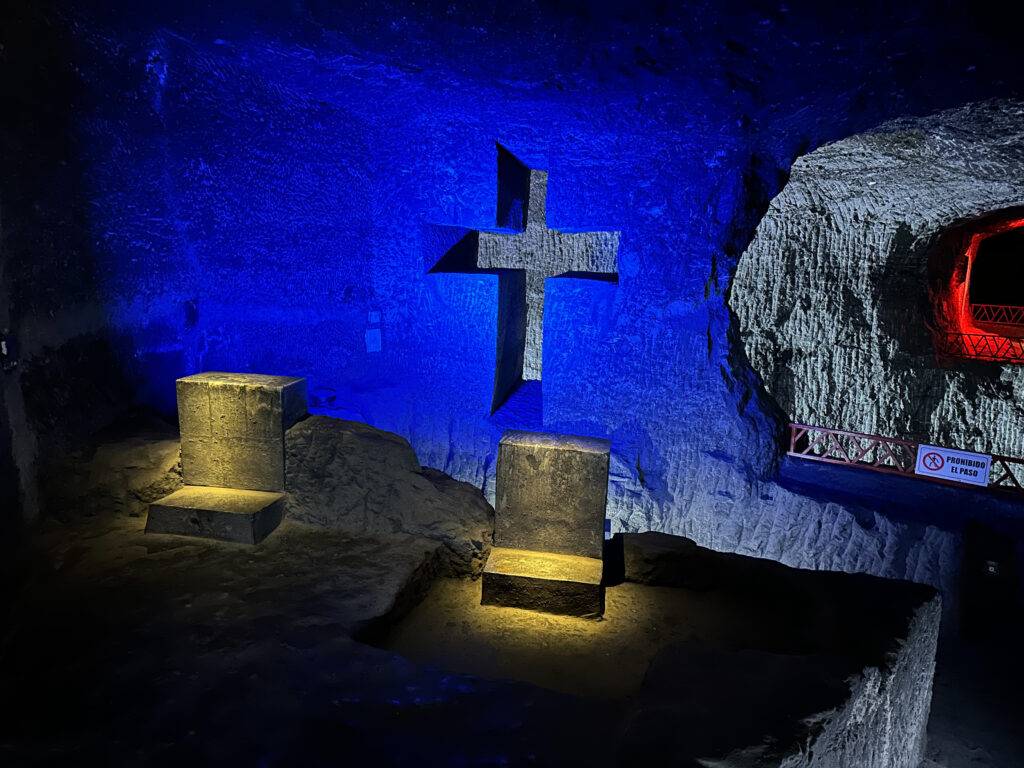

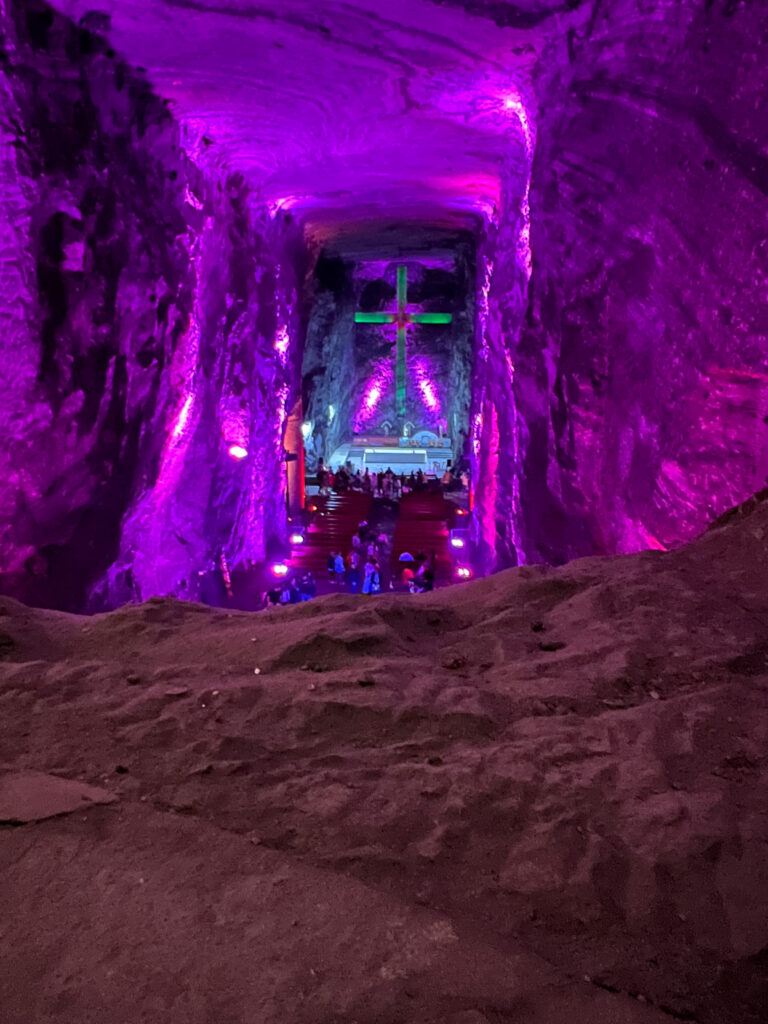
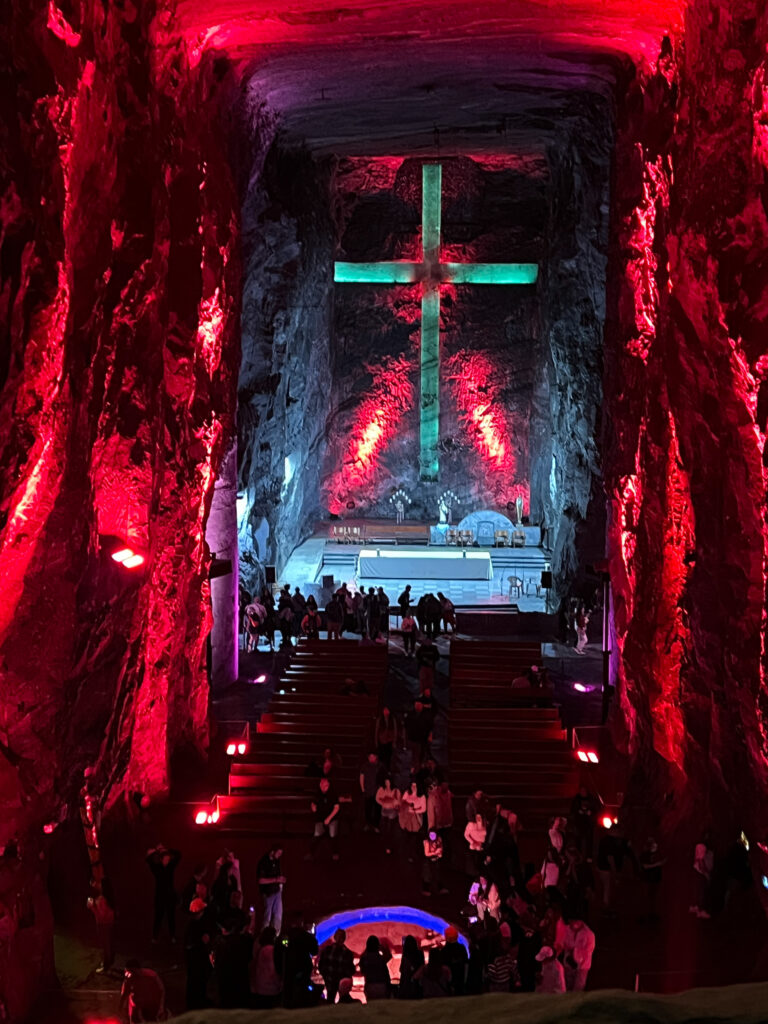
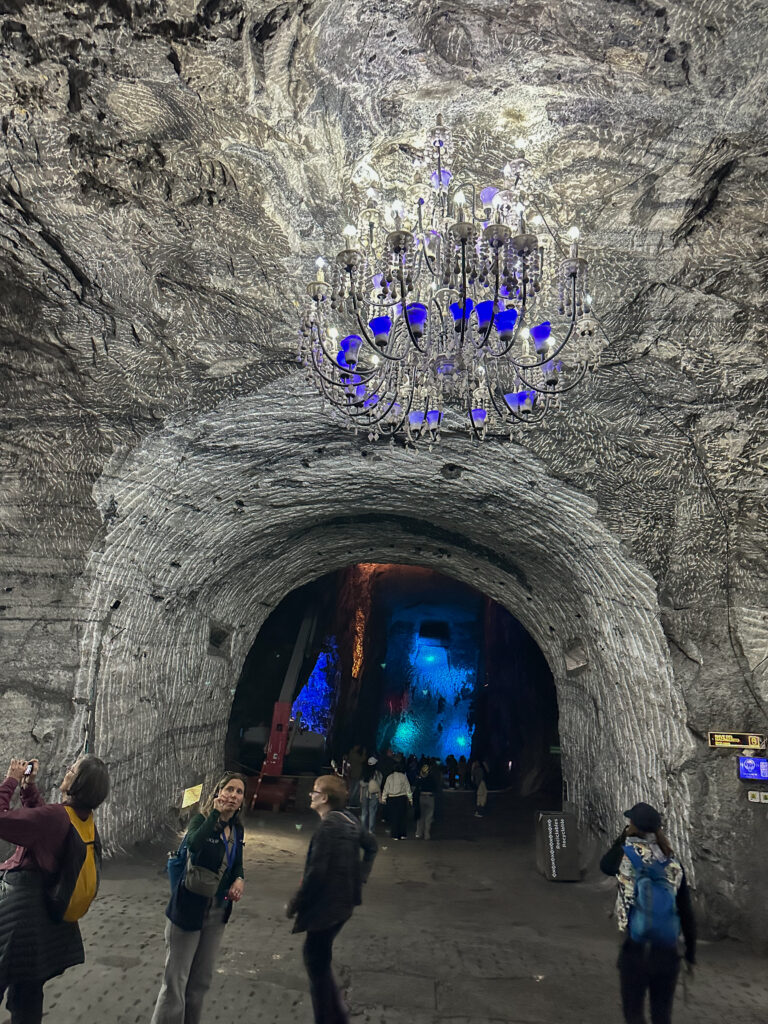
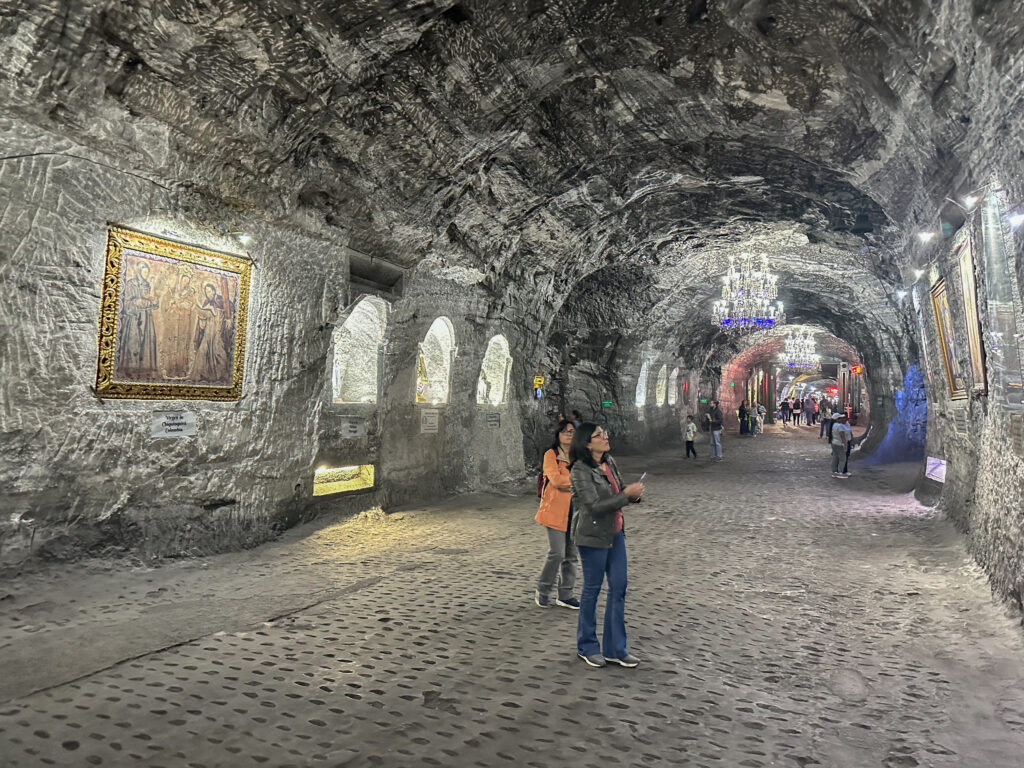
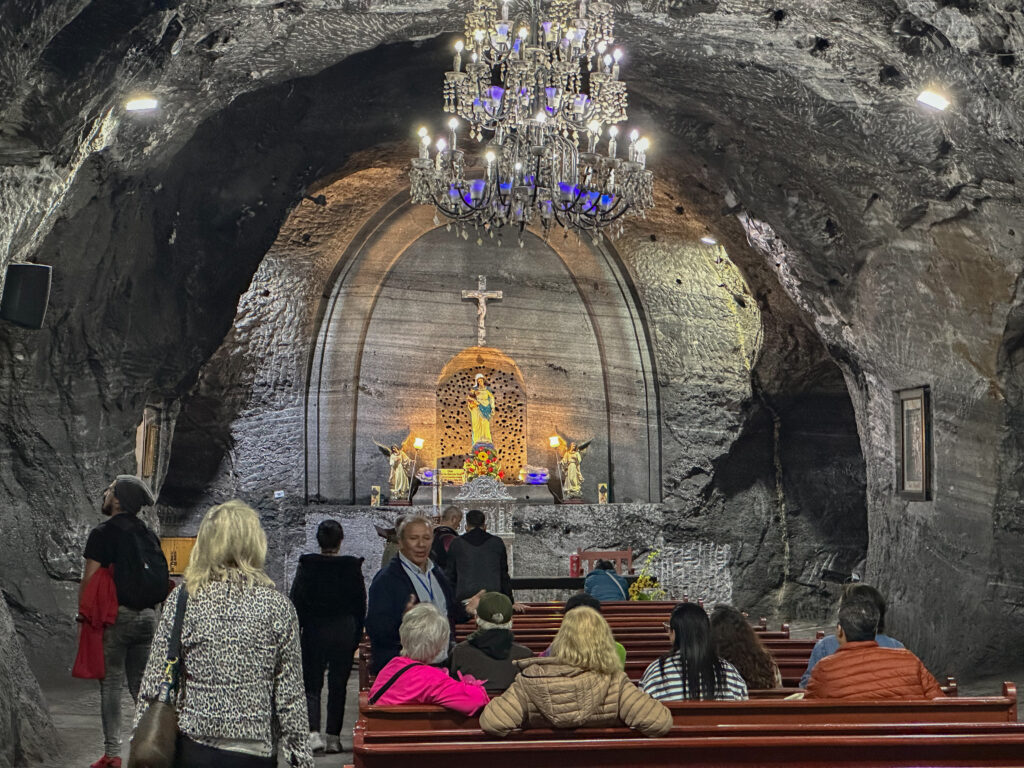
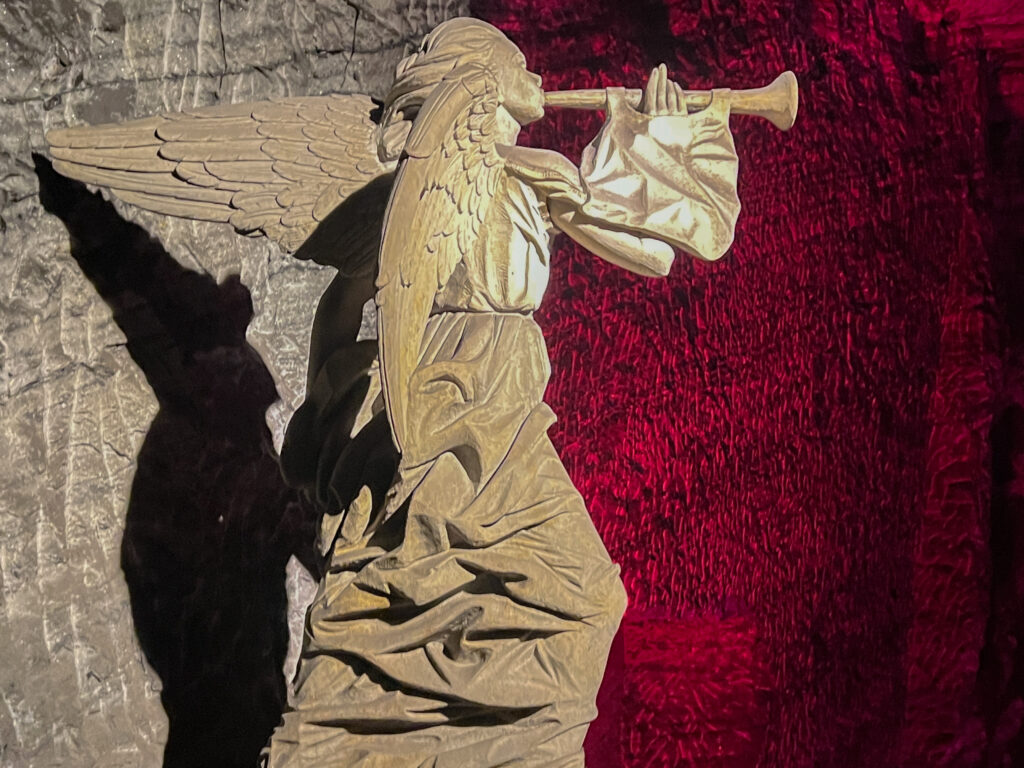
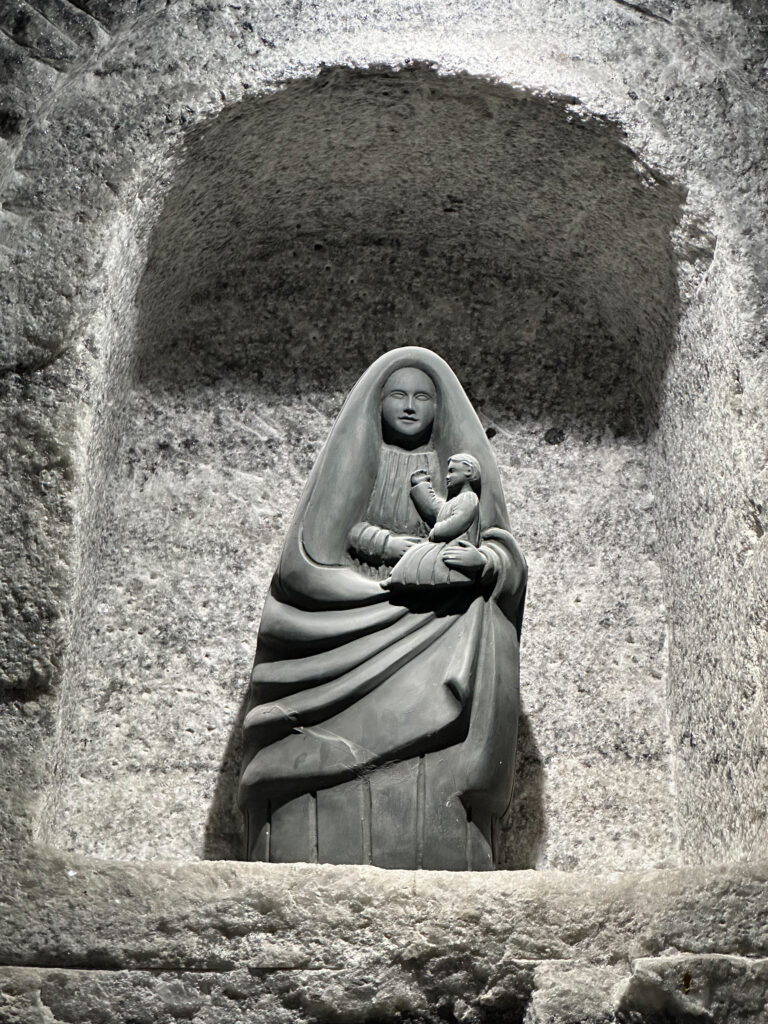
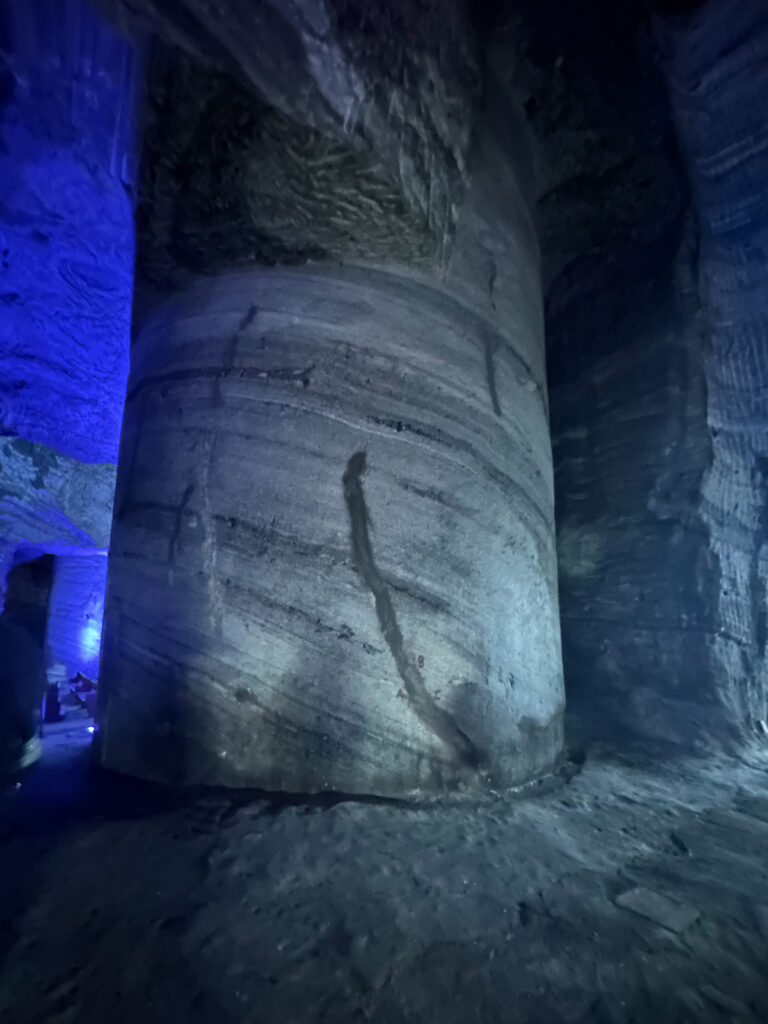
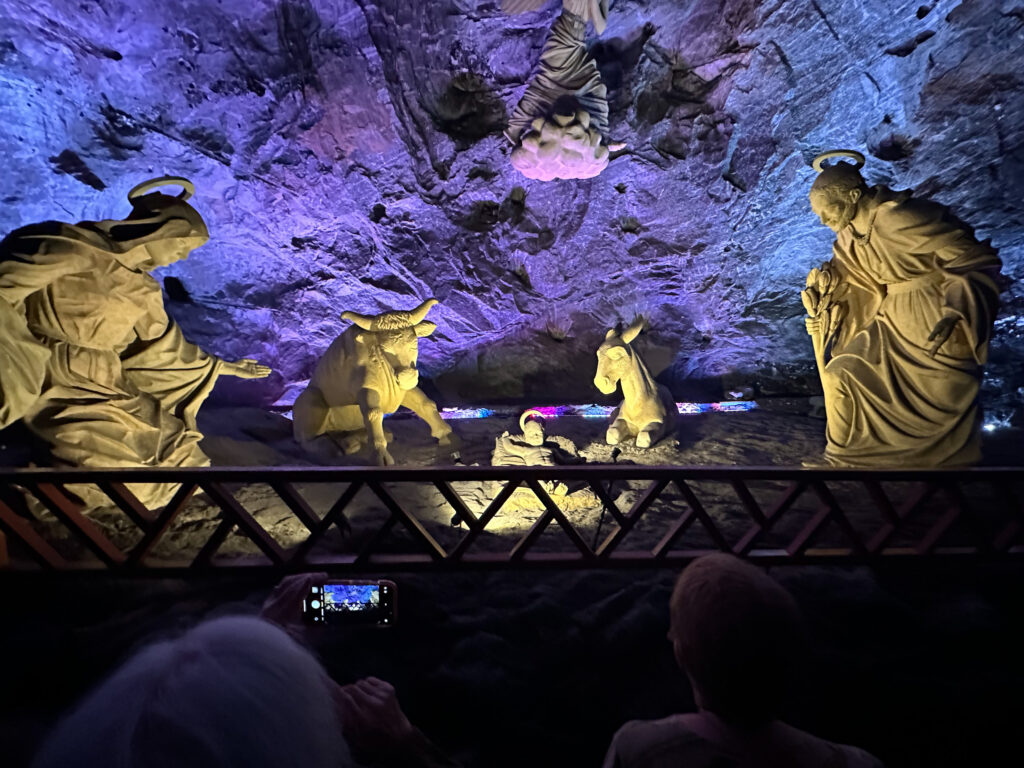
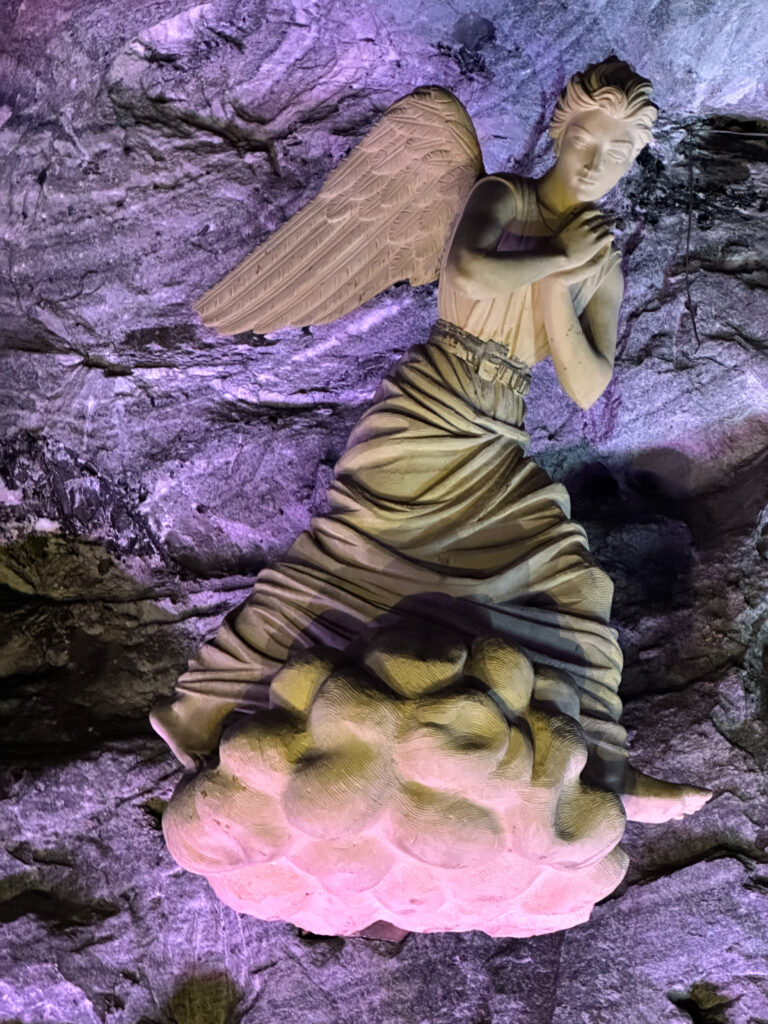
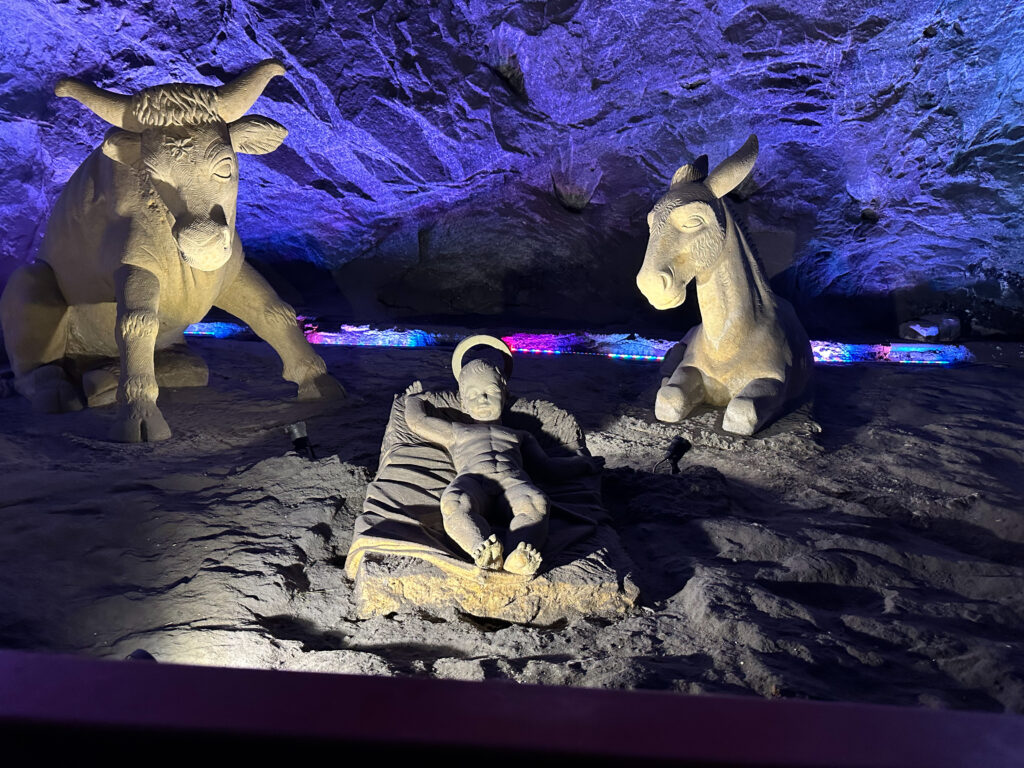
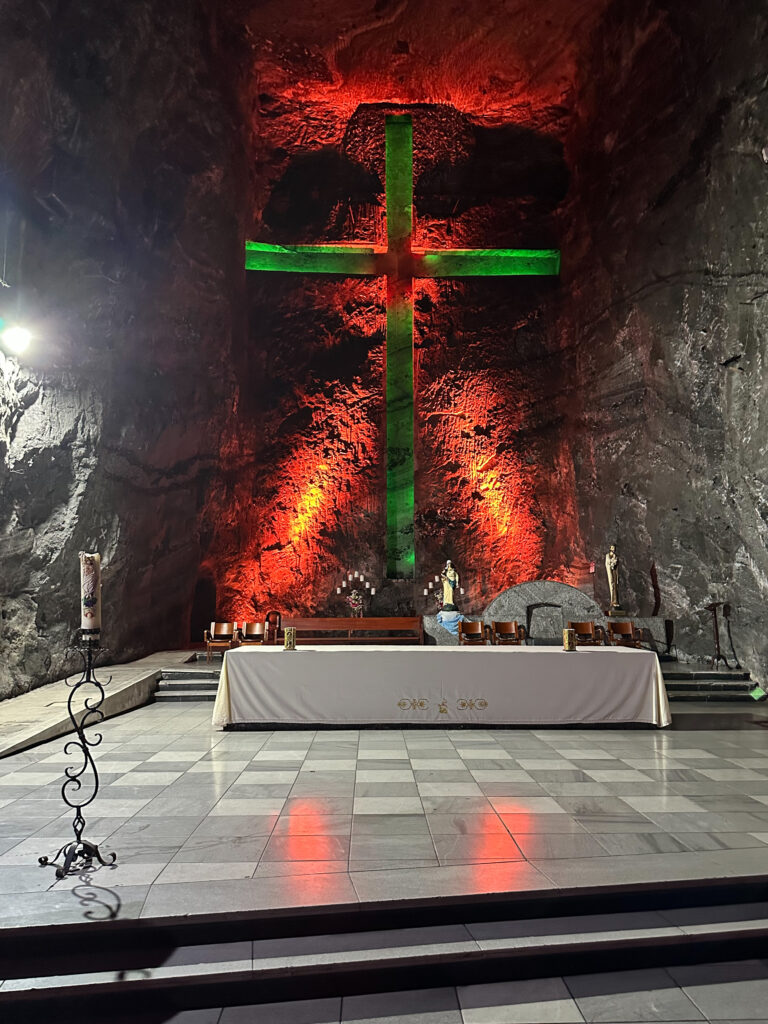
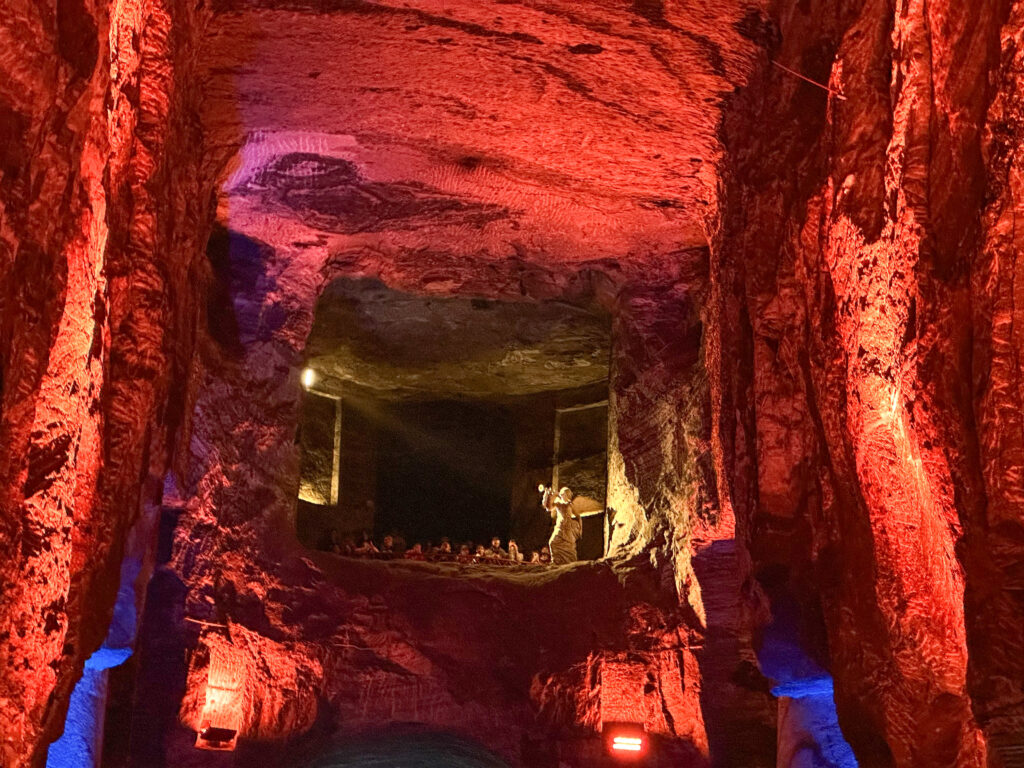
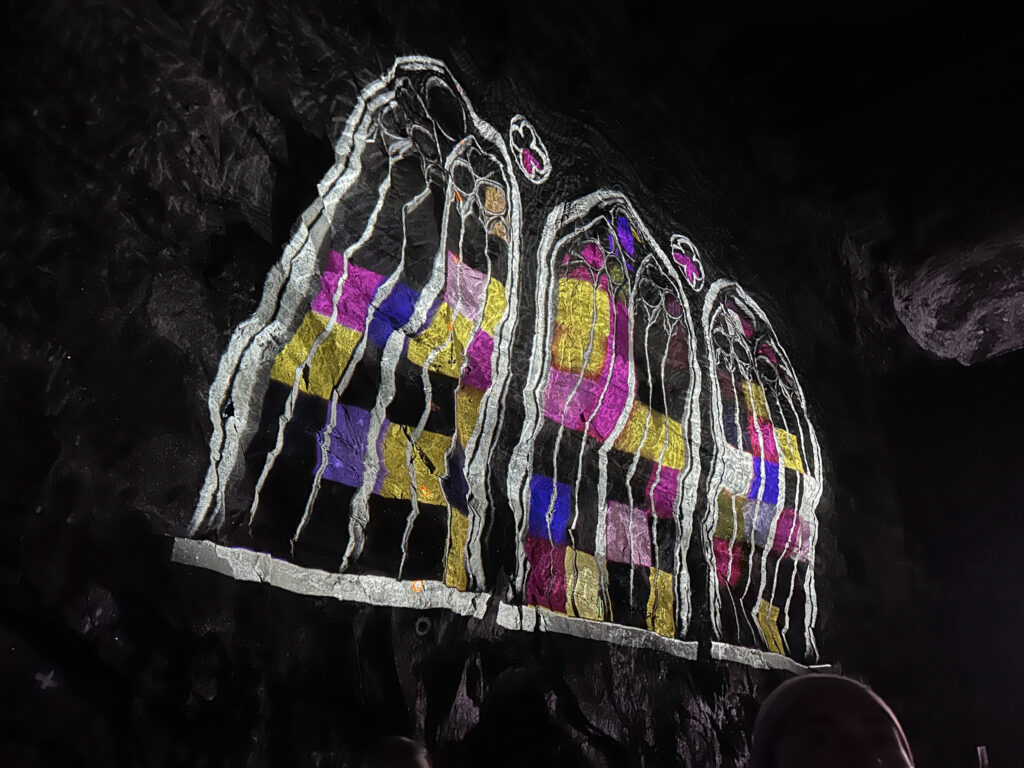

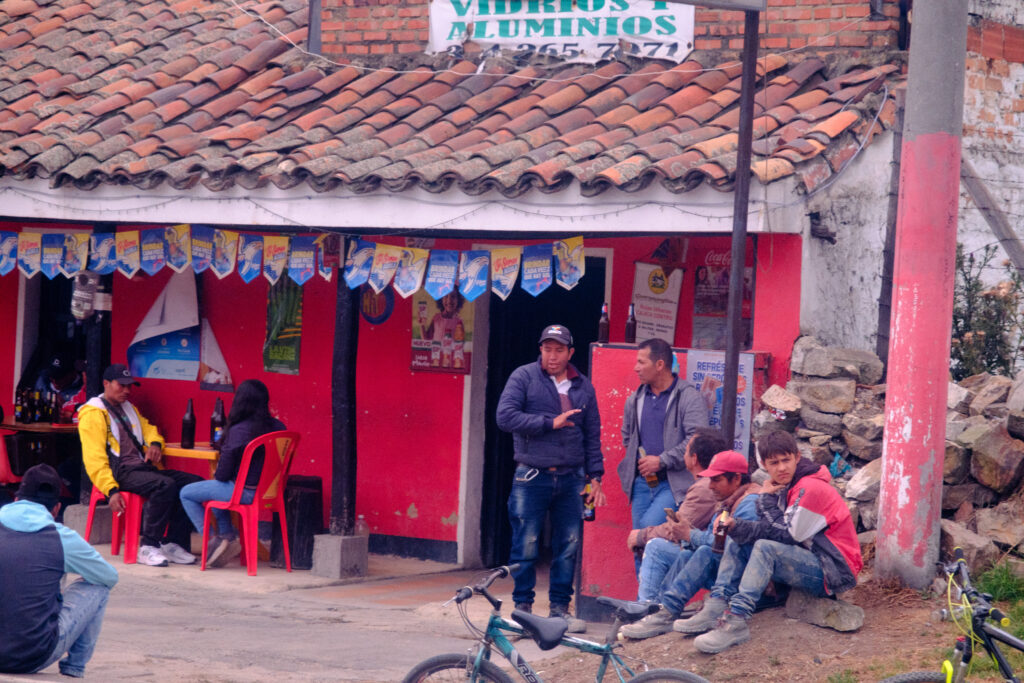
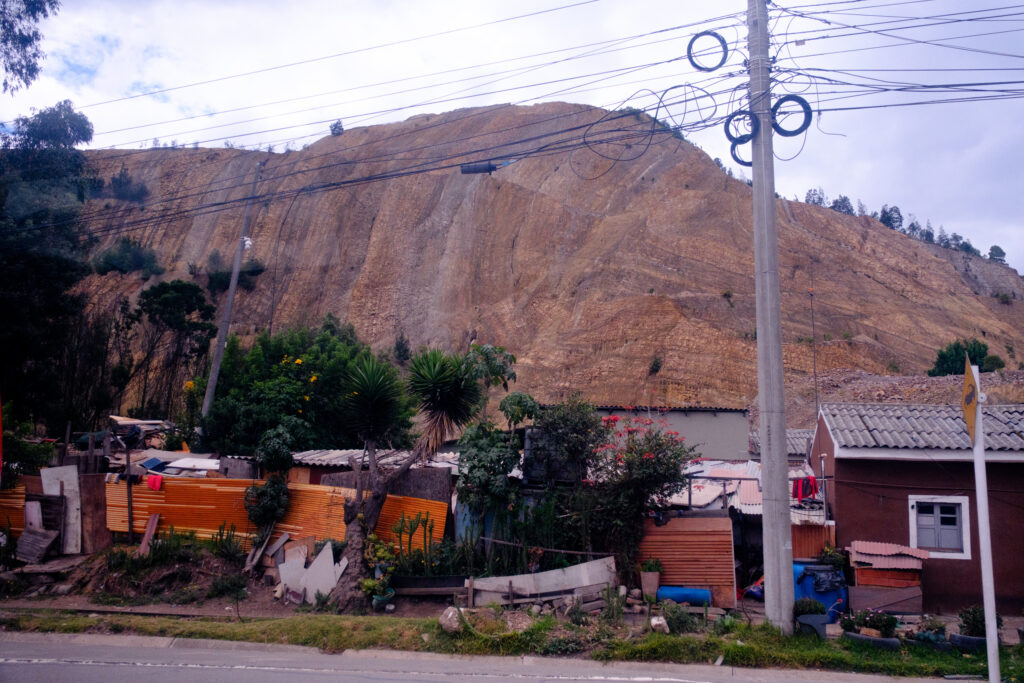
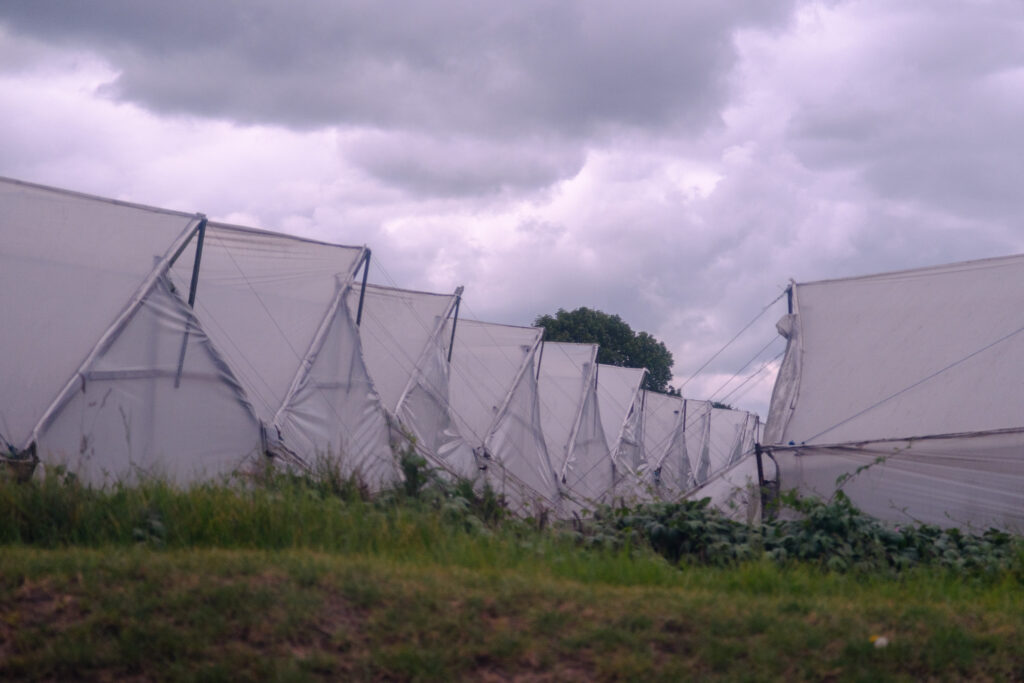
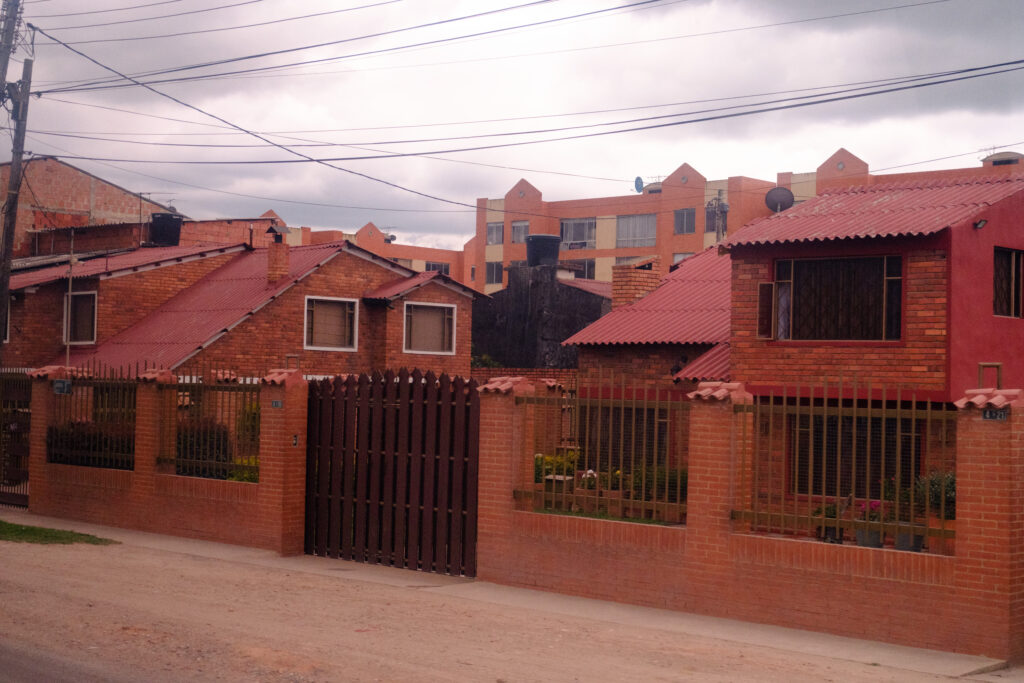
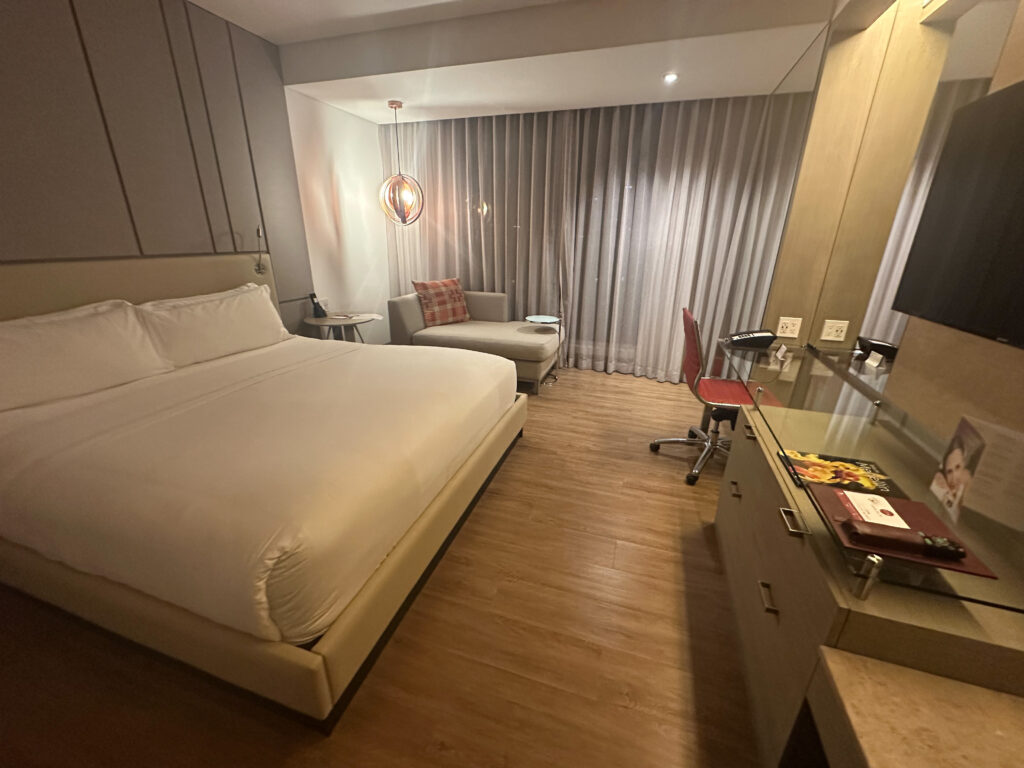
I would have loved this adventure. I believe Poland has some really cool salt mines too. Have you visited them?